Life is crazy and the idiots running the West are the craziest of them all. I hope that you all are being prudent and collecting firewood, having a wood stove, riding a bicycle, and learning how to can and tend to your gardens. The madness from above will trickle down and saturate your life in a flood. Do not be caught “flat footed”.
Here’s some articles, art, fun, and amusements for today. have fun. -MM
Wearing Futuristic Protective Suits, Washington State Crews Destroy First US Murder Hornet Nest

Heavily protected crews worked in Washington state on Saturday to destroy the first nest of so-called murder hornets discovered in the United States.
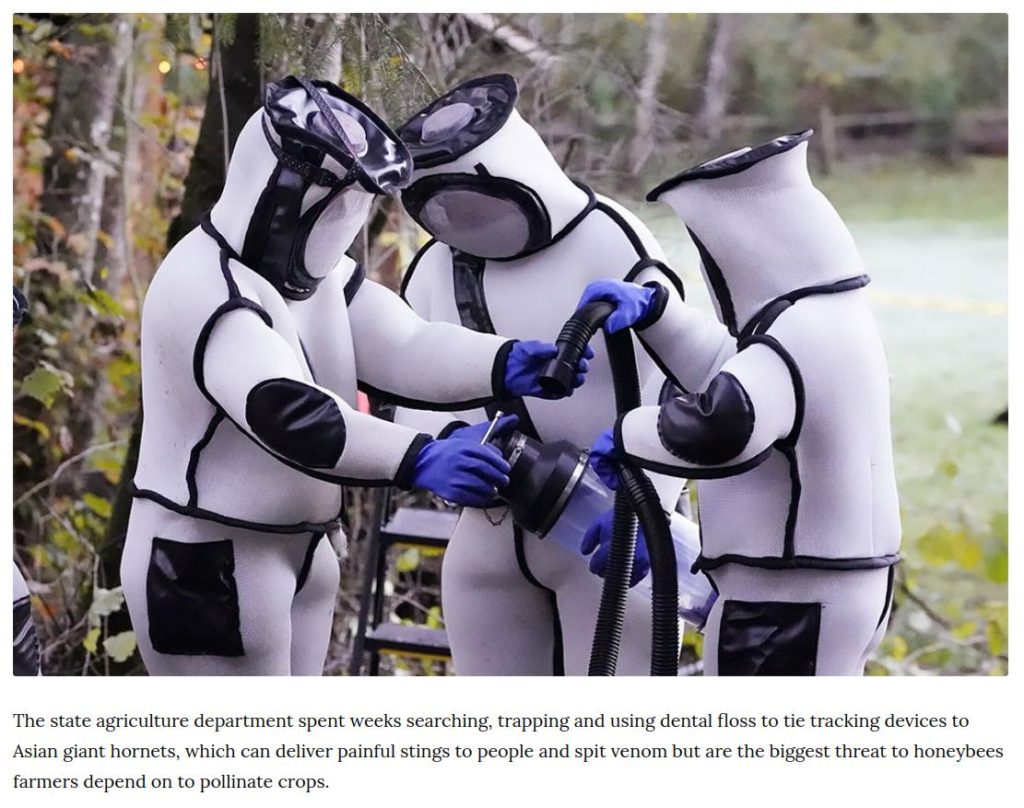
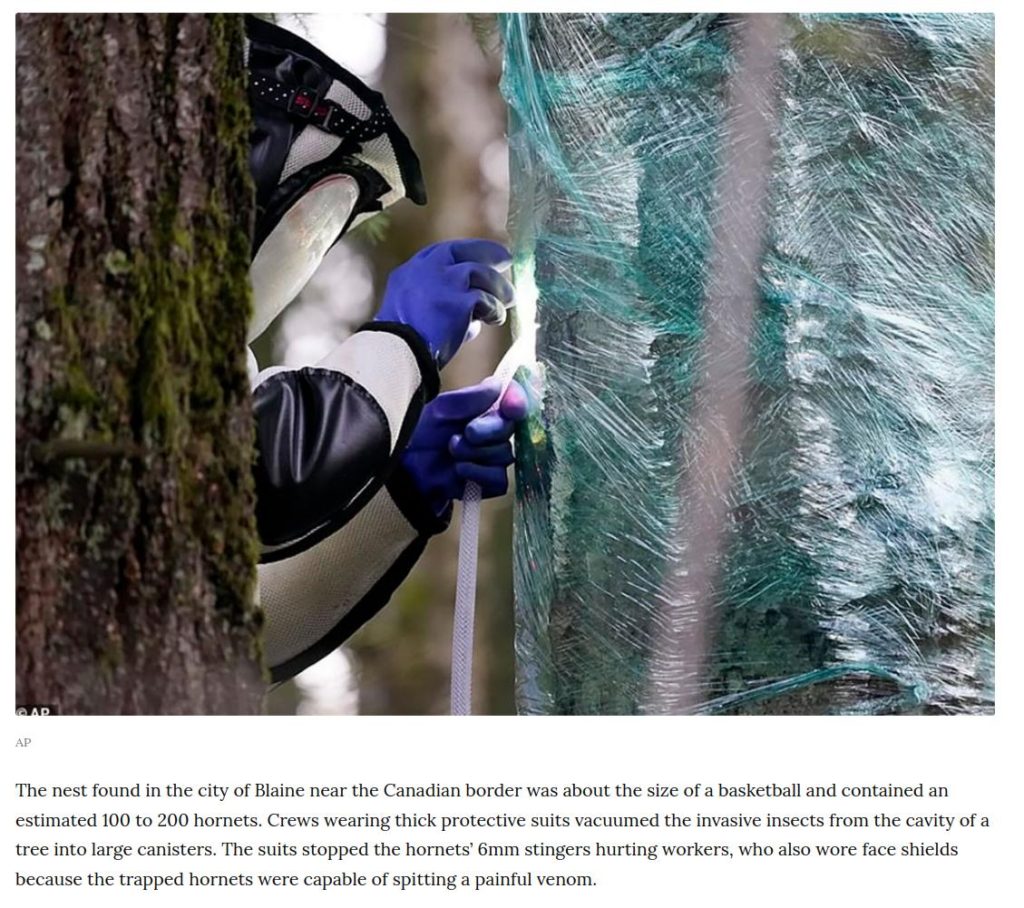
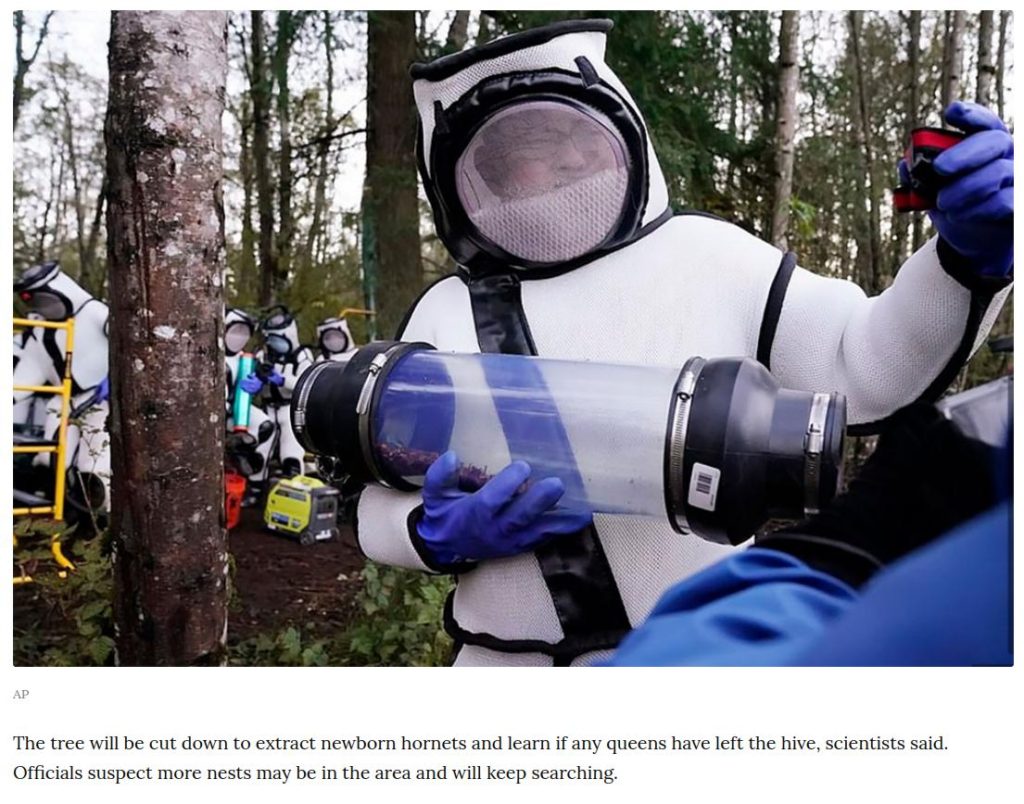

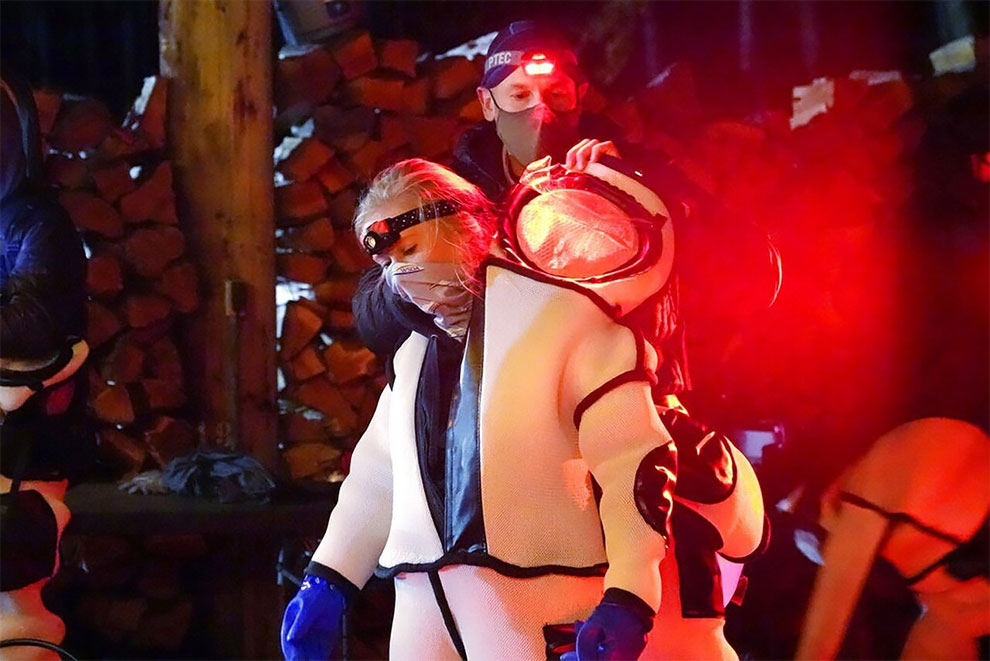




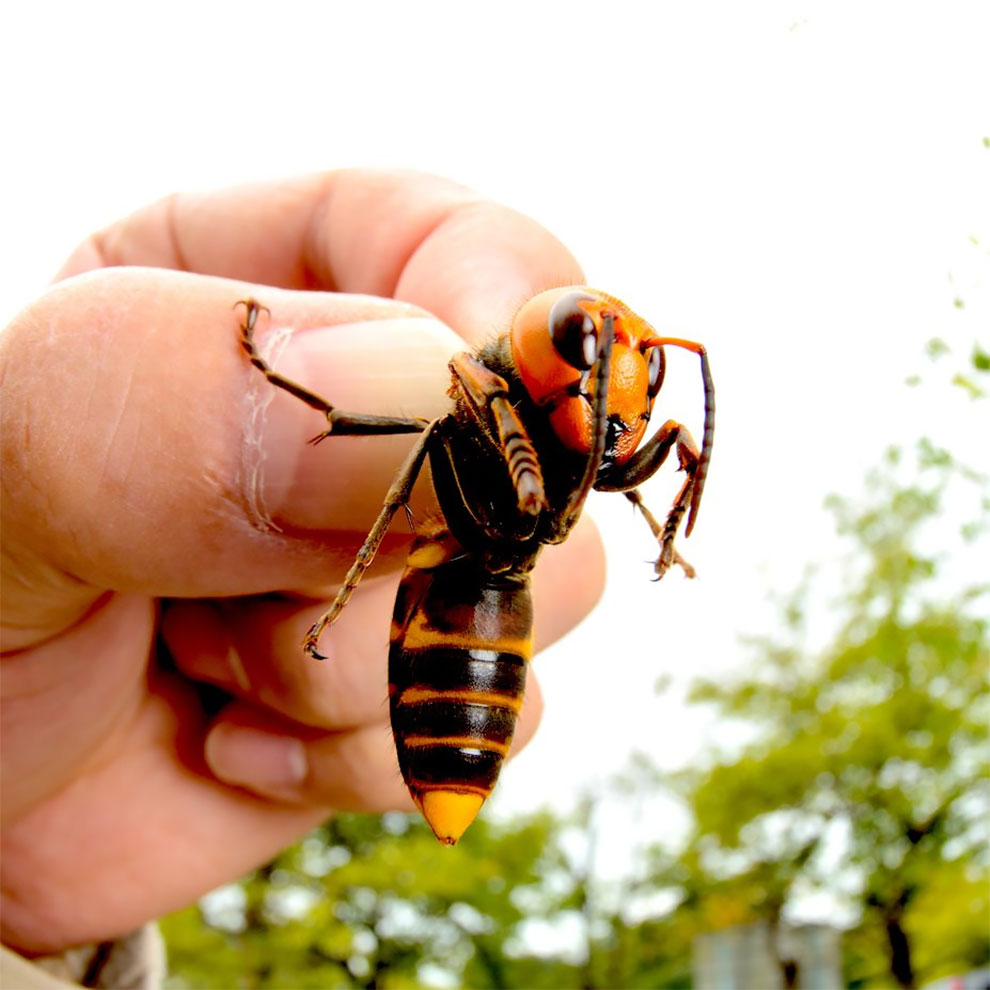
Race Against Time to Save the 33,000-Year-Old Underwater Cosquer Cave
During glacial Pleistocene, the entry to the famous Cosquer Cave was 100 meters (330 ft) above sea level, but the Holocene sea level rise, propelled lately by climate change, has meant that the entrance to the cave is now 37 meters (121 ft) below sea level. Renowned for being the only place in the world where prehistoric underwater marine art can be found, scientists are now racing against time to save the art from climate change and pollution, reports Agence France-Presse (AFP) .
Over 30,000 years old and created over 15 millennia, the spectacular cave art at Cosquer Cave is in grave danger, with a 12 cm (almost 5 in) rise in sea level in 2011 alone. With sea levels rising a few millimeters every year, and the combination of water and plastic pollution is doing more and more damage to the art, archaeologist and diver Luc Vanrell and his colleagues have taken matters into their own hands.
Cosquer Cave: A Fortuitous Discovery and an Artistic Language
Discovered by Henri Cosquer in 1985, Cosquer Cave was only revealed to the public in 1991. In that interim six-year period dozens of interested explorers, divers and amateur enthusiasts tried to visit the cave, with three divers losing their lives in the process. It was after this tragic incident that the entrance to the cave was made public. Luc Vanrell explored the cave in 1994, and by 1995 had taken on all the scientific and technical work related to the preservation of this Upper Palaeolithic marvel.
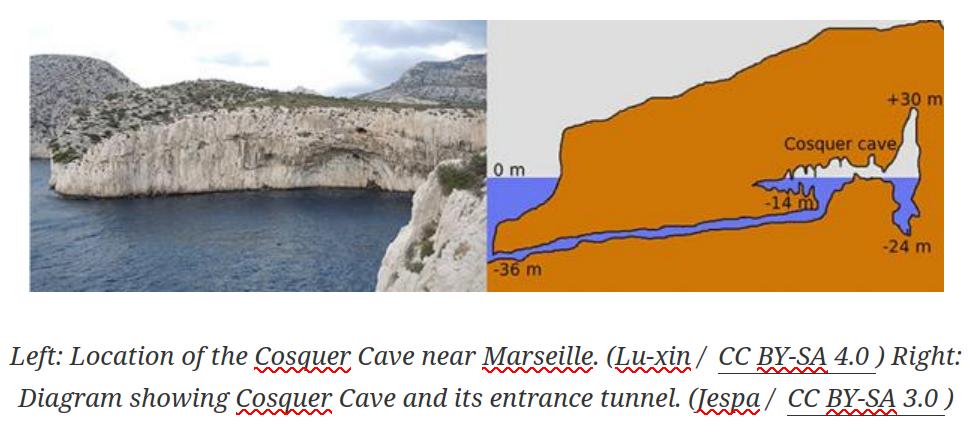
While in use, Cosquer Cave was 10 kilometers (6.2 mi) away from the coast. “At the time we were in the middle of an ice age and the sea was 135 meters [443 ft] lower” than it is today, highlighted archaeologist Michel Olive in AFP. “The entrance to the cave was on a little promontory facing south over grassland protected by cliffs. It was an extremely good place for prehistoric man.” Olive has been put in charge of the academic research and study of the cave.
Though four-fifths of the cave has inadvertently been lost or submerged due to the passage of time, 229 rock art figures depicting 13 species remain on the wall. An added bonus is 69 red or black hand prints , including three that have been left by mistake, some of these made by children. In total, 600 signs, images and rock carvings, which include aquatic life never seen before in cave paintings have been found. The cave was occupied between 33,000 and 18,500 years ago, but no traces or evidence of people having lived there have been found, reports The Daily Mail .
To access the cave, visitors first need to dive to the bottom of the Mediterranean Sea off the coast of southern France, at the gorgeous Calanques inlets east of Marseille. After that, they have to navigate a 137 meter (450 ft) tunnel, before arriving at a submerged cavern. The cavern leads to the 2,500 square meter (27,000 sq. ft.) Cosquer Cave.
On 4 June 2022 a life-sized replica cave, known as Cosquer Méditerranée , is being opened up a few kilometers away in Marseille. The replica will confirm the bountiful coastal wildlife that must have once graced the Mediterranean – horses, deer, bison, ibex, prehistoric auroch cows, saiga antelopes, seals, fish, penguins, and even a cat and a bear. There are also hundreds of geometric signs, and eight depictions of male and female body parts.
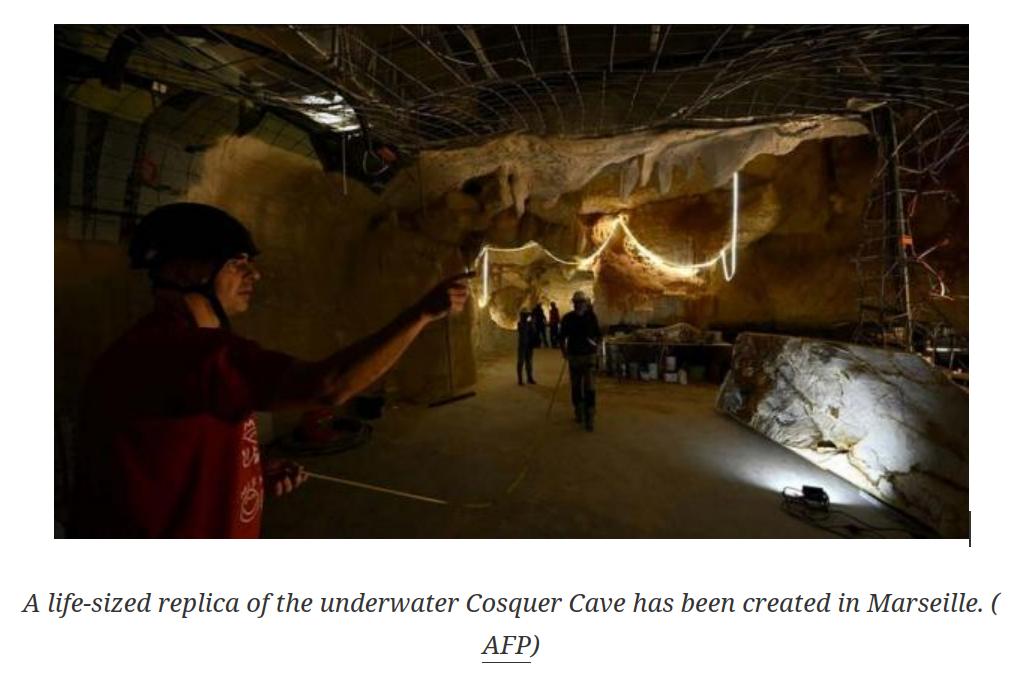
Digital Mapping and Preservation at Cosquer Cave
As of now, Vanrell and his team are rushing to beat the clock to prepare a 3D reconstruction of the cave through digital mapping. “We fantasized about bringing the cave to the surface. When it is finished, our virtual Cosquer cavern—which is accurate to within millimeters—will be indispensable for researchers and archaeologists who will not be able to physically get inside,” said diver Bertrand Chazaly, who is in charge of the operation to digitalize what has come to be known as the “underwater Lascaux” cave. The replica cave , slightly smaller than the original, has cost a whopping $24 million.
In fact, in terms of importance and size Cosquer Cave is right up there with Lascaux, Altamira, and Chauvet, three of the largest cave sites in the world. “And because the cave walls that are today underwater were probably also once decorated, nothing else in Europe compares to its size,” says Vanrell.
Having said that, the alarming rise in sea levels, exacerbated by the pace of anthropocenic activity in the past few decades, has caused the walls to rinse and be leeched out. It has also finally gained the attention of the French government, who have launched a major push to record all available data before it’s too late.
In the meantime, Vanrell and his team are hoping to discover what the purpose of the cave was, in order to understand the ways of our ancestors and their artistic pursuits. After all, examples of Palaeolithic cave art have been located across all continents, including cave art created as far back as 45,000 years ago in Indonesia . Clearly, cave art, which predates human language, is the first form of symbolic visual communication that developed into more complex forms of language much later on.
“The peace dividend has ended, and it is time for China to prepare for a complete decoupling”
No more illusions exist in China. The "barbarians" will NOT accept coexistence and win-win situations with the rest of the world.
"The peace dividend is over, it's time for China to have to prepare for a full decoupling" School of International Relations and Public Affairs, Shanghai International Studies University [Introduction] Since the change between China and the United States in 2018, the world situation has been in turmoil, and various "decoupling theories" at home and abroad have become popular. Especially since the conflict between Russia and Ukraine, the international situation has shown a clear camp-like pattern, and the United States has targeted China from all aspects of its domestic and foreign affairs. Although many people believe that globalization is irreversible and do not believe that there will be a day of complete decoupling, if there is a complete decoupling in the future, how should we deal with it? This article argues that the Russian-Ukrainian conflict is a symbolic event in the end of the globalization tide led by the United States, which means that China no longer has the peaceful external development environment of the past 40 years. The author points out that the current seemingly "rule-based order" is actually a center-periphery hierarchical international order dominated by Western countries. Because of their strong ability to manage and control capital, China and Russia have become the last two obstacles for the United States to further control the global periphery, and it is inevitable that they will be fully suppressed by the West. Therefore, China must re-examine the past tradition of multilateralism, adjust the spatial priority of foreign exchanges, and reshape a new international environment that is conducive to China's national security and long-term development. The author believes that in the future, China will promote the construction of a new global system, that is, a "three-ring" international system to ensure China's national security and development : the first ring is East Asia, Central Asia and the Middle East around China. Form a system of close industrial division of labor, and obtain stable energy supply and reliable security barriers through them; the second ring is the developing countries in Asia, Africa and Latin America, with which China exchanges raw materials and industrial products, and assists their development; the third ring is Expand to traditional industrialized countries dominated by Europe and the United States. Among them, the "first ring" is the key to China's construction of the "new third ring" international system. In recent decades, developing countries in Asia, Africa and Latin America have formed a new global system. The solid foundations of developing countries in terms of economic volume, trade exchanges, and economic cooperation are not what they used to be. To further enhance economic and political autonomy, we must get rid of financial and monetary dependence on Western countries. Therefore, to build the "new three-ring" international system, a higher level and wider range of financial and monetary cooperation should be developed among developing countries This article was originally published in the 3rd issue of "Cultural Landscape" in 2022 (June issue), with the original title "Constructing the "New Three Rings": Facing the Possible China's Choice for Comprehensive Decoupling" , which only represents the author's point of view for everyone to think about. Building the "New Three Rings": China's Choice in the Face of a Possible Comprehensive Decoupling Russia's "special military operation" against Ukraine, and the ensuing full-scale confrontation between Western countries and Russia, is a landmark event in the end of the globalization tide since the 1980s. The United States has hijacked its allies to impose deadly sanctions on Russia, and coerced other countries in the world to choose sides between Western countries and Russia. The world is reappearing the scene of life-and-death battles a hundred years ago, and it also brings huge challenges to China. The "end of globalization" makes China no longer have the external development environment of the past 40 years to use. The United States promotes the process of rebuilding the international system dominated by it and "decoupling" from China and Russia, which is very likely to be further strengthened in the future. The characteristics of the times in today's world have undergone a paradigm change. Faced with the possibility of passive and comprehensive decoupling, China needs to actively adjust its foreign strategic arrangements and make a new choice on the priority of state exchanges, so as to shape a new type of international system that is conducive to hedging the negative impact of Western countries' decoupling from China. ▍The unspoken rule of the international order is the center-periphery power structure In the 30 years since the disintegration of the Soviet Union, Russia has moved from actively moving toward the United States and Western countries at first, to gradually alienating them, and even now fighting fiercely, highlighting the political limits of globalization. Contrary to people's romantic imagination of globalization, the latest round of globalization was originally an investment of American hegemony, partially serving the purpose of dismantling the Soviet Union and the socialist bloc, which made it impossible to expand indefinitely. From the perspective of the relationship between the leading countries and following countries of globalization, or the developed countries and developing countries, there is a limit of equality in international politics: when globalization backfires on the initiators and threatens their power advantages, the global The transformation will inevitably be "reversed", and the operating path will be redesigned. The process of globalization in recent decades and America's pursuit of power advantage are two sides of the same coin. The two are mutually conditional and mutually advanced. Russia's "special military operation" against Ukraine is the result of this round of globalization that has completely exposed its power and brought an end to the globalization led by the United States The eastward expansion of NATO is the main reason for Russia to take the initiative. This appears to be a security issue, but in fact it is also an economic issue in the process of globalization. Peripheralizing the Soviet Union in the global system is the goal of the globalization process initiated by the United States. Russia’s desire to use globalization to achieve national rejuvenation and become a central country is obviously contrary to the logic of its occurrence and evolution. Global capital, especially financial capital's interest in Russia, is more concentrated in energy, food and minerals, which are areas where financial capital can make huge profits. However, since Putin came to power, Russia has strengthened its control over key industries related to national security and basic people's livelihood, and is committed to building the Eurasian Economic Union and creating an economic development space suitable for itself, which is not welcome by external capital. The eastward expansion of NATO is the embodiment of capital’s influence on politics to achieve market expansion. It constantly squeezes Russia’s development space and aggravates Russia’s externalization. If no effective response is made, Russia will be further fixed in the position of primary product provider and lose its position as a primary product provider. The ability to participate in great power politics, and even a domestic crisis. This is what the Russian elite does not want to see. The eastward expansion of NATO and the current frenzied sanctions against Russia by Western countries have revealed the power structure of the contemporary world. After the end of World War II, the European colonial system gradually disintegrated. Since the second half of the 20th century, the clear rules of the international order have been centered on the United Nations and international law, and embody the principle of sovereign equality of states. However, the center-periphery hierarchical international order under the European colonial system has not really disappeared, but has continued to this day as an unspoken rule and an implicit order, but the absolute hierarchical power relations characterized by direct drive in the past no longer exist. It is based on the "common but differentiated" international order, that is, all countries have equal sovereignty on the surface, but there are still power differences in actual operation. "Rule-based order" is the main expression of this order, all countries need to abide by the same rules, but the real connotation of this rule is not centered on the United Nations and international law, but centered on Western countries. U.S. hegemony since the postwar period and the G7 established after the 1970s are the main manifestations of the contemporary version of the global center-periphery order. The annual meeting of the G7 discusses more than just seven countries. The matter is also the matter of the whole world, and they are negotiated and then pushed to be transformed into global rules. The "rule-based order" is actually "the rule-based order established by Western countries", and who is the rule maker is the key. In the global division of labor system, rule-making, money supply and industrial product production are the affairs of a few countries in the center. If other countries want to join in, they may disintegrate the dominant position of a few countries. This is the mastery of the rules. Countries that have the right to formulate and dominate the currency and maintain a technological advantage with intellectual property do not want to see it. China's unexpected economic growth in recent decades has broken the center-periphery international order since the postwar period, threatening the unspoken rules centered on Western countries. In recent years, the United States has defined China as a major "strategic competitor" "The main reason is that China's development has touched the cheese of the United States and other Western countries. The latter never imagined that China can also "enter the center of the world stage", even now It's actually just "getting closer". Whether it is the eastward expansion of NATO or the US's selection of China as a key target of suppression, it all reflects that the US and Western countries want to maintain and strengthen their own power advantages. The Russian-Ukrainian conflict and the Ukrainian sanctions against Russia are further highlighted by the fact that most countries in the world are in the "rural areas" in the periphery, a few countries are in the "cities" in the center, and the United States is the "Downtown", "city" in the global "urban center" does not want to see "rural" become "urban" like them. The hindrance of China and Russia to the global "city center" lies not only in their strong ability to control capital, making them the last two largest undisciplined places of capitalist globalization; much greater national power, and become an obstacle for the "urban center" to gain further control over the "rural" fringes of the world. In the process of this round of globalization, China, with its strong economic growth and comprehensive national strength, has shown a trend of moving from "rural" to "urban". In recent years, it has become the leader of "de-globalization", which has exposed the "common" limits of the post-war international order. China has also become a member of the "city" that the heartland countries cannot tolerate. ▍The basic plate of China's multilateral cooperation lies in non-Western countries In "An Analysis of All Classes in Chinese Society", the first chapter of "Selected Works of Mao Zedong", the opening question asks: "Who are our enemies? Who are our friends? This question is the primary question of the revolution." In the past few years, the reform and opening up, and the proposal to build a community with a shared future for mankind in recent years, no longer deliberately emphasize the distinction between enemies and friends in international exchanges, but hope to promote "the beauty of the United States and the beauty of the world" in the "beauty of each, and the beauty of the beautiful". ". But whether the world can achieve "Great Harmony" is not determined by the wishes of the Chinese family. With the US-led Western countries showing an all-round confrontation with Russia and China, the characteristics of the contemporary world can no longer be regarded as "peace and development" mechanically, but "competition" and even "war" need to be seriously considered ——Even if the war can be ruled out, it is impossible to achieve better development in the globalization system dominated by Western countries as always. China has to rethink the "primary question" in its foreign exchanges: who are the possible partners of China at present and in the future, and who are the partners that China cannot hold? Birds of a feather flock together. The same is true of countries. Countries with similar experiences, situations and demands are more likely to form long-term cooperative relationships. In the contemporary discourse system of international relations, Western countries vs non-Western countries, developed countries vs developing countries, northern countries vs southern countries are common distinctions between countries. Developed countries and northern countries are mostly Western countries, while southern countries and developing countries are mostly Western countries. The countries are all non-Western countries. Unlike the distinction between developed countries and developing countries, and northern countries and southern countries, which is biased toward the economic level, the distinction between Western countries and non-Western countries also points to the political and cultural level, which implies global power relations. Since the 19th century, under the influence of three key elements, industrialization, rational state building and "progressive ideology", the world has undergone a "Global Transformation" : a "centerless and pluralistic world" that used to be in a discrete state. , turned to a highly interconnected and hierarchical "center-periphery" global international system, with the West at the center of this order. In the revolutionary era from the late 19th century to the first half of the 20th century, the frequently discussed "imperialism" was the description and characterization of this order relationship. Imperialism and globalization in the middle and late 19th century to the early 20th century are two sides of the same body. Imperialism comes with globalization, while globalization strengthens imperialism. Barrel array", trying to escape from it is not easy. Western countries used to be the center of the global system and the birthplace of imperialism. The colonial order in the modern world and the hegemony of the United States since the mid-to-late 20th century have all come from this; at the same time, many revolutions in modern times, including the 20 What the anti-colonial movement in the mid-to-late century was trying to break was this center-periphery power structure of inequality and injustice. In the center-periphery global power structure, it is impossible for the countries in the heartland to truly help the revolution of the countries in the peripheral regions, nor would they welcome the countries in the peripheral regions to join the countries in the central region in an equal manner. The fate of being deprived can only rely on the grouping of countries in the peripheral areas to keep warm, and in occasional situations, the gaps between the countries in the central area must be used to strive for cooperation with the latter in the struggle. During the Chinese revolution in the first half of the 20th century and the consolidation of the regime in the second half of the 20th century, the main external forces that China relied on came from the periphery of the global system. The Communist International network, which the Communist Party of China once participated in, was an alliance between the non-regime forces of the colonized and oppressed nations at that time; during the War of Resistance Against Japanese Aggression, China took the opportunity of participating in the World Anti-Fascist War to continue the "anti-imperialist" demands of the previous Chinese revolution. , to further promote the abolition of the various unequal rights imposed on China by imperialist countries; after the founding of the People's Republic of China in 1949, China attached great importance to cooperation with "Third World" countries, and supported anti-colonial movements and anti-colonial movements in Asia, Africa and Latin America. The country building after independence, especially the active participation in the Bandung Conference in 1955 and the proposal of the Five Principles of Peaceful Coexistence, has been well echoed by the Asian, African and Latin American countries, and has also become an important node in the virtuous circle of relations between China and the Asian, African and Latin American countries. With the support of the latter, China returned to the United Nations in 1971 and became a permanent member of the Security Council. The mutual solidarity and assistance between China and the Asian, African and Latin American countries in resisting colonial rule and in national construction has laid a key feature of China's multilateralism since modern times, that is, attaching great importance to cooperation with non-Western developing countries and building a common resistance against central countries. Defend national independence and development and progress in the unequal and unjust international order. In its all-round diplomacy based on non-Western developing countries, China does not exclude exchanges and even the development of friendly and cooperative relations with Western developed countries and other major powers. However, it should also be noted that in the past, China's exchanges and cooperation with countries in the heartland have always had two preconditions: First, from the perspective of China, China insists on developing its foreign relations on the basis of independence, equality and mutual benefit, and opposes the development of foreign relations in international relations. Power hierarchy; second, from the perspective of countries in the center, they always have a ceiling in cooperation with China, that is, they cannot shake the global power structure centered on Western countries. When either of these two premises changes, it will be difficult for China, as a developing country, to continue to develop in-depth cooperative relations, especially political cooperative relations, with Western countries. ▍Adjusting the spatial priority of China's foreign exchanges In the past 40 years, China has abandoned ideological differences and avoided differences in national systems, and has been committed to cooperation with all countries, gradually forming a foreign exchange in which "big powers are the key, neighboring countries are the primary, developing countries are the foundation, and multilateralism is an important stage". pattern. But this pattern has encountered many obstacles at the time of the "end of globalization". The "decoupling" initiated by the United States coercing other Western countries with China in terms of economy, technology, knowledge, and personnel exchanges is unlikely to be withdrawn due to the war between Russia and Ukraine. On the contrary, it may intensify. Since the founding of the People's Republic of China, it has experienced many changes in the direction of its diplomacy, from the "one-sidedness" at the time of the founding of the People's Republic of China, to the division of "one line, one large area" and "three worlds" in the 1970s, to the division of "three worlds" after 1978. Turning to reform and opening up, focusing on development and cooperation with Western countries, all responded to the situation at that time. At the time of the current "big changes unseen in a century", Western countries have shown a stronger and stronger intention to suppress potential challengers. Especially after the outbreak of the Russian-Ukrainian war, groups of Western countries have assembled to suppress non-Western countries in all aspects. The situation is fully exposed and will become the structural presence of international relations for a long time to come. China cannot but be highly vigilant that Western countries' all-encompassing sanctions and suppression measures against Russia will be imitated on China in the future. Therefore, it is urgent to re-examine China's past tradition of multilateralism, adjust the spatial pattern of foreign exchanges, and strengthen cooperation with non-Western developing countries, so as to create a new international environment conducive to safeguarding China's national security and long-term development. In 1974, Mao Zedong proposed the division of "three worlds", and made a distinction and analysis of the three types of countries in the world at that time and the ways China could interact with them. It is also a member of the "Third World" countries. The Chinese government and people firmly support the just struggle of all oppressed people and nations. The "Three Worlds" theory inherits the previous experience of China's foreign exchanges and ranks the spatial priority of China's foreign exchanges at that time. It is also an important ideological guide for China's participation in South-South cooperation in the past. The spatial priority still has strong instructive significance. Compared with the fact that China has attached more importance to cooperation with Western countries since the reform and opening up, China will put the promotion of South-South cooperation in a prominent position in the future. Whether it is seeking diplomatic breakthrough, long-term development or national rejuvenation, for a long time to come, China's foreign strategic arrangements will focus on promoting the construction of a new global system based on Asia and its surrounding regions. The final result is to form a "three-ring" international system to ensure China's national security and development: the first ring is East Asia, Central Asia and the Middle East around China. East Asia connects the world's financial resources, and China and countries in this region have formed close industries. The division of labor system, Central Asia and the Middle East connect the world's resources, China must rely on the countries in this region to obtain stable energy supply and reliable security barriers; the second link is the vast developing countries in Asia, Africa and Latin America, with which China supplies raw materials and industrial products. China's foreign aid should also be mainly aimed at these countries; the third ring extends to traditional industrialized countries dominated by Europe and the United States, with which China exchanges industrial products, technologies and knowledge. Based on this "three-ring" structure, we should arrange the priorities and front and back of external exchanges, and re-plan the direction and content of external exchanges.
Home Natural Gas Price DOUBLED in last 6 months
As regular readers to this web site know, I inherited my mother’s house in northeastern, rural, Pennsylvania when she died last November. I’ve been spending time up here doing clean-up and maintenance work because this house can be a fall-back (Bug-Out) location if needed due to economic collapse, social upheaval, or war.
There is no Municipal water supply, or sewer, or natural gas supply up here; everyone has to take care of such things on their own.
As such, the house has Well water, a Septic system and tanks to hold natural gas/propane for heating and cooking.
The local gas supply company knows how large the tanks are at each customer home. Their computers monitor “Degree Days” which are days where the temperature outside is such that a typical family would be using a furnace, and they automatically send a delivery truck, similar to the generic one shown above, to come refill the tanks as the Degree Days warrant. Of course, you can call for a delivery if you feel you need one, but they track all this stuff pretty good, and we have yet to ever run out of gas.
Based on actual, annual, gas use, the company projects the use for each coming year, projects the future cost of gas, and sets up a budget plan for each customer so they pay the same amount each month, and at the end of the year, it all pretty much averages out to a zero balance. Sometime you owe a little, other times they owe you.
The budget for this house for the past few years, based upon ACTUAL usage was $180 a month.
I got a letter from the gas company yesterday. Based on this house’s actual use, and more importantly, the projected future price of gas, this year’s budget jumped to $345. a month! ! !
Folks, that’s almost DOUBLE . . . and get this: “Due to the volatile nature of the natural gas markets, this price may DOUBLE AGAIN OR MORE ! ! ! ! “
Joe Biden and Democrats did this. Just a reminder.
Germany to change constitution to enable $110 billion defense fund
BERLIN, May 29 (Reuters) - Germany has agreed to change its constitution to allow for a credit-based special defense fund of 100 billion euros ($107.35 billion) proposed after Russia's invasion of Ukraine, the German finance ministry announced on Sunday. read more Germany's centre-right opposition and ruling coalition with centre-left Social Democrats (SPD), Greens and pro-business Free Democrats (FDP) said they reached the required two-thirds majority to exempt the defense fund from a constitutional debt brake. According to sources familiar with the matter, the negotiations were led by FDP leader Christian Lindner, SPD's Defense Minister Christine Lambrecht, Greens leader Annalena Baerbock and the opposition's vice whip Mathias Middelberg. The money is to be used over several years to increase Germany's regular defense budget of around 50 billion euros and enable the country to meet the NATO target of spending 2% of its economic output on defense each year.
HISTORIC: NYC Cancer Treatment Results in “Complete Remission” of Colon Cancer
A small NYC-led cancer trial has achieved a result reportedly never before seen – the total remission of cancer in all of its patients.
To be sure, the trial — led by doctors at Memorial Sloan Kettering and backed by drug maker GlaxoSmithKline — has only completed treatment of 12 patients, with a specific cancer in its early stages and with a rare mutation as well.
But the results, reported Sunday in the New England Journal of Medicine and the New York Times, were still striking enough to prompt multiple physicians to tell the paper they were believed to be unprecedented.
One cancer specialist told the Times it was an “unheard-of” result.
According to the NEJM paper and the Times report, all 12 patients had rectal cancer that had not spread beyond the local area, and their tumors all exhibited a mutation affecting the ability of cells to repair damage to DNA.
After being treated with the drug, dostarlimab, all 12 are now in complete remission, with no surgery or chemotherapy, no severe side effects — and no trace of cancer whatsoever anywhere in their body.
Doctors quoted by the Times said that while the results were promising, they would need to be replicated and expanded – nor was it clear if the medication in question would be useful beyond this specific application.
Japanese Artist’s Maddeningly Realistic Food Illustrations Have Our Mouths Watering

This Japanese artist says that he gets a lot of joy from hearing that his work looks tasty, and it’s a compliment he receives often. Yoshinobu Saito worked previously as a character designer, but recently it was his artistic forays into the world of gastronomy which have gained him attention online.
And it’s easy to see why. His work is almost maddeningly realistic. In particular, he seems to specialise in the tantalising glisten that many delicious foods have, the one that relentlessly and unforgivingly triggers our hunger pangs.
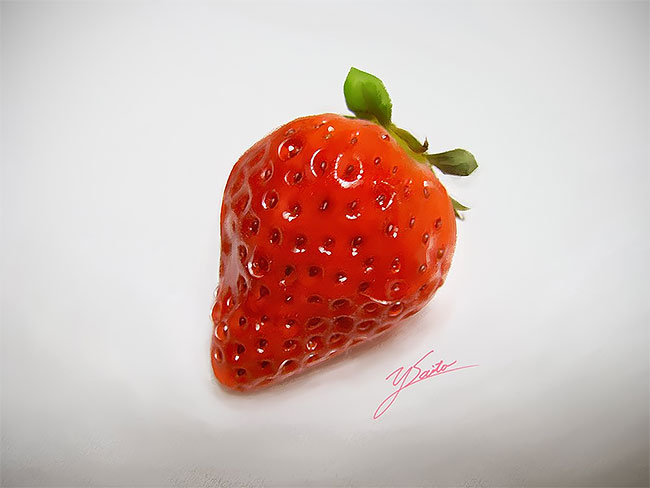
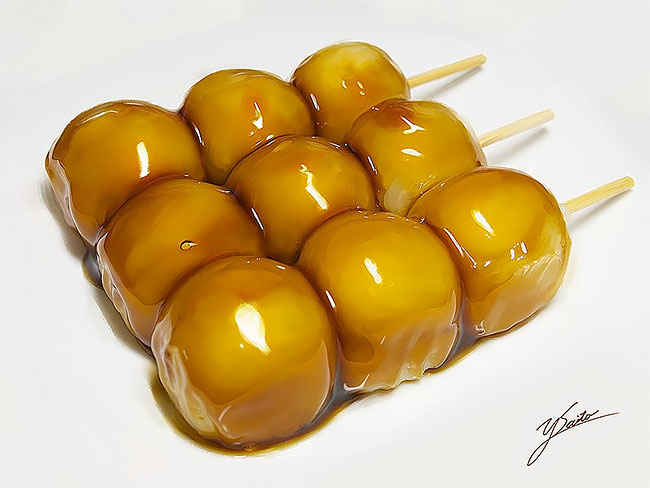

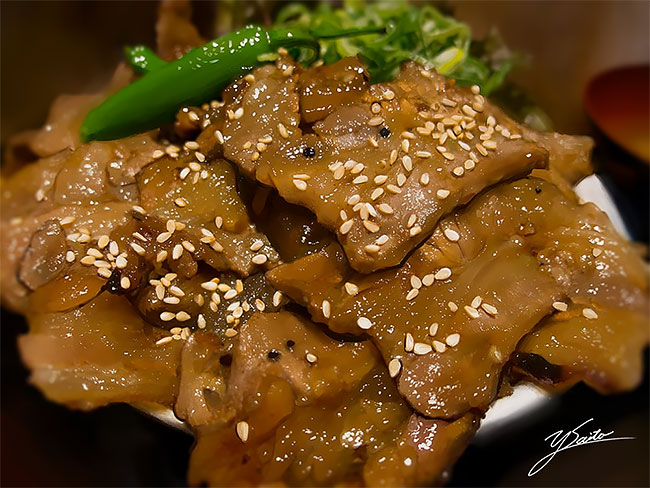
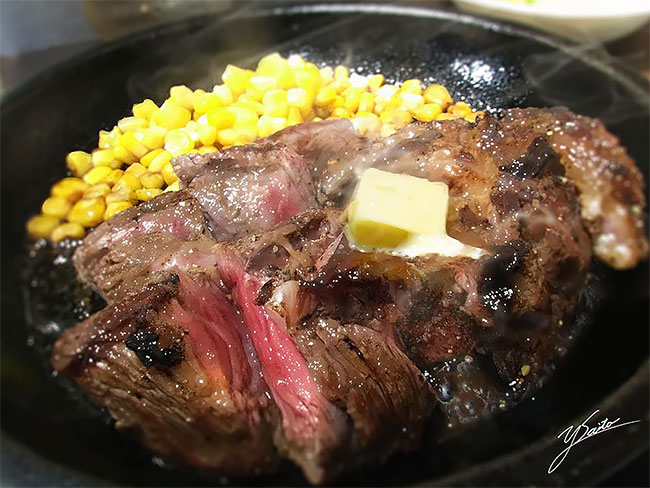

Tiananmen Square: The Failure of an American-instigated 1989 Color Revolution
Article HERE
By Larry Romanoff
There are few places in China that seem more burned into the consciousness of typical Westerners than Tiananmen Square, and few events more commonly mentioned than the student protests of 1989. But the stories are wrong on several levels. It was never reported in the Western media that there were two separate events that occurred in Beijing on June 4, 1989. One was a student protest that culminated in a sit-in in Tiananmen Square by several thousand university students, which had lasted for several weeks and finally terminated on June 4. The other was a one-day worker strike that occurred (perhaps not by chance) also on June 4, when a group of workers unhappy with their lot in life, organised their own protest independently of the students, and in a different place. For reasons that will become apparent, the workers’ protest is the necessary focus for understanding the events of that date, so I will begin there.
The Workers’ Revolt
A group of workers gathered, and barricaded several streets in Muxidi, an area in Beijing five or six kilometers from Tiananmen Square, the barricades attended by several hundred mostly adult workers, with an undetermined few young people. However, there was a third quite large group present that to my knowledge has never been clearly identified, though it is obvious from the photos they were not workers and certainly not young students. (1) Thugs or anarchists might be an appropriate adjective, but the facts seem to support the conclusion (and my own personal judgment) that they were mercenaries. (2)
The government sent in busloads of soldiers, accompanied by a few APCs to clear the barricades and re-open the streets to traffic. (3) The violence began when the third group attacked the young men attempting to clear the barricades. They were well-prepared, armed with at least hundreds and perhaps thousands of gasoline bombs, and immediately torched dozens of buses and the few APCs – with the soldiers still inside. Many soldiers in both types of vehicles escaped, but many others did not, and many burned to death. There are countless photos of dead soldiers burned to a crisp, some hung by the thugs from lampposts, others lying in the street or on stairs or sidewalks where they died, others hanging out of bus windows or the APCs, having only partially escaped before being overcome by the flames. There are documented reports and photos showing that the group of thugs managed to get control of one APC, and drove it through the streets while firing the machine guns on the turret. (4) It was only then that the government sent in armed soldiers and military equipment.
Government reports and independent media personnel generally claim a total of 250 to 300 civilian deaths before the violence subsided, but a similar number of soldiers had already been killed. When police or military are attacked in this way, they will surely use force to defend themselves and cannot be faulted for that. If you or I were the military commander on the scene, watching our men being attacked and burned to death, we would have done the same. From everything I know, I can find no fault here.
Here is an eyewitness report from someone who was there, an excerpt from the book ‘Tiananmen Moon’: (5)
“There was a new element I hadn’t noticed much of before, young punks decidedly less than student-like in appearance. In the place of headbands and signed shirts with university pins they wore cheap, ill-fitting polyester clothes and loose windbreakers. Under our lights, their eyes gleaming with mischief, they brazenly revealed hidden Molotov cocktails. Who were these punks in shorts and sandals, carrying petrol bombs? Gasoline is tightly rationed, so they could not have come up with these things spontaneously. Who taught them to make bottle bombs and for whom were the incendiary devices intended?
Someone shouted that another APC was heading our way. My pace quickened as I approached the stalled vehicle, infected by the toxic glee of the mob, but then I caught myself. Why was I rushing towards trouble? Because everyone else was? I slowed down to a trot in the wake of a thundering herd of one mass mind. Breaking with the pack, I stopped running. Someone tossed a Molotov cocktail, setting the APC on fire. Flames spread quickly over the top of the vehicle and spilled onto the pavement. I thought, there’s somebody still inside of that, it’s not just a machine! There must be people inside.
Someone protectively pulled me away to join a handful of head-banded students who sought to exert some control. Expending what little moral capital his hunger strike signature saturated shirt still exerted, he spoke up for the soldier. “Let the man out,” he cried. “Help the soldier, help him get out!” The agitated congregation was in no mood for mercy. Angry, blood-curdling voices ricocheted around us. “Kill the mother fucker!” one said. Then another voice, even more chilling than the first screamed, “He is not human, he is a thing.” “Kill it, kill it!” shouted bystanders, bloody enthusiasm now whipped up to a high pitch. “Stop! Don’t hurt him!” Meng pleaded, leaving me behind as he tried to reason with the vigilantes. “Stop, he is just a soldier!” “He is not human, kill him, kill him!” said a voice. “Get back, get back!” someone screamed at the top of his lungs. “Leave him alone, the soldiers are not our enemy!” After the limp bodies of the soldiers were put into an ambulance, the thugs attacked the ambulance, almost ripping off the rear doors in an attempt to remove the burned soldier and finish him off. After that, charred bodies of soldiers were hung from a lamp post, and a large amount of ammunition was taken from the APC.” (6)
From a Government Report on the Worker’s Riot:
“Rioters blocked military and other vehicles before they smashed and burned them. They also seized guns, ammunition and transceivers. Several rioters seized an armored car and fired its guns as they drove it along the street. Rioters also assaulted civilian installations and public buildings. Several rioters even drove a public bus loaded with gasoline drums towards the Tiananmen gatetower in an attempt to set fire to it. When a military vehicle suddenly broke down on Chang’An Avenue, rioters surrounded it and crushed the driver with bricks. The rioters savagely beat and killed many soldiers and officers. At Chongwenmen, a soldier was thrown down from the flyover and burned alive. At Fuchengmen, a soldier’s body was hung upside down on the overpass balustrade after he had been killed. Near a cinema, an officer was beaten to death, and his body strung up on a burning bus.
Over 1,280 vehicles were burned or damaged in the rebellion, including over 1,000 military trucks, more than 60 armored cars, over 30 police cars, over 120 public buses and trolley buses and over 70 motor vehicles of other kinds. The martial law troops, having suffered heavy casualties before being forced to fire into the air to clear the way forward. During the counter-attack, some rioters were killed, some onlookers were hit by stray bullets and some wounded or killed by armed ruffians. According to reliable statistics, more than 3,000 civilians were wounded and over 200, including 36 college students, were killed. As well, more than 6,000 law officers and soldiers were injured and scores of them killed.” (Cables from the US Embassy in Beijing confirmed the basics of this report as well as the casualty estimates). (4)
Though conclusive direct evidence is still thin, it appears a certainty the revolt had considerable outside help. In addition to the curious timing, there is too much evidence of advance preparation for violence and supply of the weaponry used. Gasoline was tightly rationed at the time, and unavailable in the volume required for this event. Black hands arranged the supply lines and provided instructions for the manufacture and use of the gasoline bombs which were almost unheard of in China before that time.
There are also too many signs of external incitement in the still-unidentified third group, whose violent actions in no way represented the sentiment of the attending public. The enormity of violence unleashed at Muxidi requires considerable prior emotional programming and could not possibly have originated spontaneously from a simple workers’ strike, almost a guarantee of external interference. Disaffected citizens in any country may parade and protest from real or imagined grievances, but burning young soldiers to death and stringing their charred bodies from lampposts, are not the acts of naive students wanting “democracy” or of workers protesting an inadequate social contract. (7) They are almost always the result of substantial programmed incitement from behind the scenes, usually directed to regime change.
The Student Protest
Briefly, the students congregated in the Square and waited for an opportunity to present various petitions dealing with social policy, perceived corruption, idealism, in fact the same things that we as students all had on our list of changes we wanted to make in the world. Since the government did not immediately respond, the students camped in the square and waited. Government officials held talks with the students for several weeks, and finally set a June 4 deadline for evacuation of the Square. Soldiers were sent to the Square on the day prior, but they were unarmed and carried only billy sticks. By all reports, there was no animosity between the students and the soldiers. Neither had a philosophical dispute with the other, nor did they see each other as enemies. In fact, photos and reports show the students protecting the soldiers from angry bystanders.
Discussions were held between the students and the soldiers at repeated times during the evening and throughout the night. Almost all of the students were persuaded to leave the Square during the evening, and the small remainder left the following morning. Tanks and bulldozers did enter the Square the following morning, flattening all the tents and rubbish that had piled up during the previous three weeks, pushing the garbage into huge piles and setting them afire. This was the apparent origin of claims that “thousands of students” were crushed by tanks streaming through the Square, but this was just the clean-up crew and the students were long gone when the bulldozers and heavy machinery arrived. There is overwhelming documented evidence from a multitude of reputable sources (8-15) that no violence occurred in the Square, that no students were killed, and that there never was any “Tiananmen Square Massacre”. Gunfire was apparently heard in the distance, but the few reports of gunfire from within the Square itself were later quickly discredited and, as mentioned above, the soldiers in the Square were not armed. (16)
VIDEO
Clearance of the Tiananmen Square on June 4 1989 – EN from Roberto Petitpas on Vimeo. Subtitled in CH, DE, EN, FI, FR, HZ, NL, PT, RO, SI, SP, RU
The Ever-Present Black Hand
It seems plausible that the student movement in China during the late 1980s may, at its origin, have generated spontaneously, but there is no shortage of evidence that the entire movement was quickly hijacked by agencies of the US government long before the students gathered at Tiananmen Square. It has taken some time to open locked doors and ferret out details, but it is no longer in dispute that the leaders of China’s student movement were trained in Hong Kong and Guangdong by Col. Robert Helvey, an officer of the Defense Intelligence Agency of the Pentagon, who spent 30 years instigating revolutions throughout Asia on behalf of the military and the CIA. (17)
There is little reason to question the assertion that a major part of US foreign policy then, as today, lay in attempts to destabilise China and perhaps instigate a massive revolution that would open the door to US influence and control. It is increasingly clear today that the student movement in 1989 was a major part of that strategy, orchestrated by the US State Department with the full approval of then President George Bush. (18)
I live in China and was for many years the editor of a widely-read newsletter that gave me trusted access to about 2,500 middle and high-level corporate executives who were university students in China during the period in question, many of whom were involved in the student movement, and more than a few of whom were at Tiananmen Square. I’ve spoken to many of them at length about the student movement and the events of the time. In addition to confirming my observations and conclusions, their comments and testimony strongly suggest that the very idea of a mass confrontation with the government, and the selection of Tiananmen Square as the venue, did not originate with them but were orchestrated ”from somewhere outside”.
It is necessary to understand that the student movement in China in 1989 was categorically not a “pro-democracy movement”. At its origin the student protest was primarily pragmatic civics, and secondly Chinese cultural. The students visioned themselves intellectual protesters, not political activists, with no thought of their government replicating the political structure of the West. From my discussions with many former students, the references to ‘democracy’ were imposed upon them by their CIA handlers as the best method of realising their practical and cultural ends. And these cultural ends were not necessarily very deep. Wu’er Kaixi, one of the student leaders, responded to questions about his participation by saying (in different words) “Because we want to wear Western brands and take our girlfriends to bars like the Americans do.”
Many of the students with whom I spoke, particularly those who were actually present at the Square, have told me of the supplies provided for them by various US government sources. They especially mentioned the countless hundreds of Coleman camp stoves – which at the time were far too expensive for students in China to acquire, and many commented on the well-established supply lines of these and other items. Adding to the student supplies were manuals, instructions, training, strategy and tactics, and the patiently inflammatory rhetoric of the VOA broadcasts from Hong Kong. It is not possible to sensibly challenge the assertion that the puppet-masters were American.
According to a government report, many Americans were active in stage-managing the student leaders, in violation of the martial law decrees operative in parts of Beijing at the time. John Pomfret, now of the Washington Post, was an AP correspondent in Beijing, and an important information conduit for the ringleaders, and Alan Pessin, a VOA correspondent in Beijing at the time, violated the restrictions by his illegal VOA news coverage, and repeatedly dispatched distorted reports, spreading false rumors and encouraging both rebellion and violence among the students. (19)
What Really Happened in Tiananmen Square 25 Years Ago
Most university students of that day will tell you of the influence of the VOA and the picture it painted of “freedom and democracy”. They tell of listening to the VOA in their dorms late into the night, building in their imaginations a happy world of freedom and light. The Voice of America:
“The world’s most trusted source for news and information from the United States and around the world.”
They also confirm that the VOA was broadcasting to the students 24 hours a day from their Hong Kong station during the weeks of the sit-in at Tiananmen Square, offering provocative encouragement and giving advice on strategy and tactics.
One of the original participants in the student sit-in wrote this:
“We settled down and continued with our study. We dated, found our loved ones, and many sought to go abroad. By the time we graduated there was almost no discussion about the student movement and we no longer listened to the VOA. One thing I have been kept thinking was the role of the VOA. Many students were the fans of the radio station before, during and shortly after the student movement. Even when we were on the square many students were listening to their programs as if only they could tell us what was going on. I remember at one stage . . . I realized how stupid I was . . .”
Another student made these comments:
“But it was true that the 1989 student movement was being manipulated by someone, wasn’t it? The students had nothing but emotions and superficial knowledge of politics. We started only demanding the cleaning up of corruption by officials, yet the slogans were somehow led through a transformation into ones “demanding democracy”.
There is a huge difference in political implication between these two classes of demands. So what was democracy? What kind of democracy was practiced in the west? What kind of democracy would befit China? Frankly, I (we) didn’t have clue. In other words, I didn’t know what I really wanted. I simply had this … resulting impulse to go onto the street and shout slogans. It was as if I participated just to participate and I was moved by the simple fact of experiencing a students movement. And then things got out of control. But because the student leaders refused to change stance, the students wouldn’t back off. So the whole thing dragged on. Yet a miracle happened, those “leaders” somehow managed to escape unharmed. For many years since 1989, I had been reluctant to accept that I and the other students were actually so stupid and naive to be truly manipulated by others behind the scene.”
The perception in the West, and also in China, has always been that the student congregation in Tiananmen Square was spontaneous, idealistic and, above all, peaceful. It may at its origin have been idealistic, but it was in no way spontaneous and, by May and June, the underlying peacefulness was rapidly coming to an end. In 1995, two American filmmakers at the Longbow Group, Dr. Carma Hinton and Richard Gordon, released a now-famous documentary on Tiananmen Square titled “The Gate of Heavenly Peace”. (20) Chai Ling, the Tiananmen students’ self-proclaimed “Supreme Commander”, for years pursued lawsuits against the film company (21), primarily because the documentary included incriminating video dated May 28, 1989, of her in an interview with American journalist Philip Cunningham:
“The students kept asking, ‘What should we do next? What can we accomplish?’ I feel so sad, because how can I tell them that what we are actually hoping for is bloodshed, for the moment when the government has no choice but to brazenly butcher the people (i.e. the students: Ed.). Only when the Square is awash with blood will the people of China open their eyes. Only then will they really be united. But how can I explain this to my fellow students? I can’t say all this to my fellow students. I can’t tell them straight out that we must use our blood and our lives to call on the people to rise up. Of course, the students will be willing. But they are still such young children! And what is truly sad is that some students, and famous well-connected people, are working hard to help the government, to prevent it from taking such measures. For the sake of their selfish interests and their private dealings they are trying to cause our movement to collapse and get us out of the Square before the government becomes so desperate that it takes action.”
If this isn’t clear, Chai Ling is openly stating her intention to provoke the government to a violent military solution, filling Tiananmen Square with the blood of the students – for the express purpose of “uniting the people” to incite a widespread political revolution. She then laments that (1) she cannot reveal to the students that their lives are meant to be sacrificed for this cause, and (2) “what is truly sad” is that some people, “for the sake of their selfish interests” are seeking to avoid bloodshed by preventing the government from resorting to violent measures, and seeking to disband the student protests before they themselves turn violent.
Cunningham then asked, “Are you going to stay in the Square yourself?” “No, I won’t.” “Why?” Chai replied, “Because my situation is different. I want to live. . . . I believe that others have to continue the work I have started. A democracy movement can’t succeed with only one person!” And finally, “I might as well say it – you, the Chinese, you are not worth my struggle! You are not worth my sacrifice!”
In the video there is a damning reference to American cold-bloodedness in directing the student protests, a literal confession by Chai Ling that, after the students had already voted to end their protest and leave the Square, her Hong Kong handlers still pushed her and the students to remain in the square and continue to agitate until they provoked their own bloodshed, encouraging them to sacrifice their lives as the only way to attract the world attention and sympathy which had somehow now become crucial to their cause. Transcripts and video of her entire interview along with reader comments are available online. (22)
The American plan was to incite the students to not only irritate but eventually enrage the Chinese government sufficiently to provoke a violent crackdown against the students, with the expectation this would in turn provoke the general population into a ‘color revolution’ resulting in the overthrow of the government and the collapse of China. In accord with this plan, the students were pushed to begin demanding “democracy”, quickly followed by insistent and intractable demands that the government step down. As part of the process, the students were given details on the construction of a huge papier-mâché “goddess of democracy” statue in the Square. In an intelligence summary prepared for then US Secretary of State James A. Baker dated June 2, 1989, the hope was noted that the statue would “anger top leaders and prompt a response”, stating that the students (or, factually more likely, the US government) hoped the erection of the statue would provoke “an overreaction by authorities (and) breathe new life into their flagging movement.” (23) In all cases in all countries, students and young people are co-opted into a US attempt at regime change. Westerners may not easily appreciate that Beijing in 1989 was not different in any material aspect.
After the Government declared martial law, Chai Ling’s American puppet-masters rapidly escalated their offensive by having her distribute leaflets inciting armed rebellion against the Government, calling upon the students and the general public to “organize armed forces and oppose the Communist Party and its government”, going so far as to actually make a list of names of government officials they planned to kill, encouraging the students to obtain firearms for the purpose. She claimed they would never yield and “would fight to the finish” with the government, scheming until past the end to provoke a bloody incident in Tiananmen Square.
China was spared a national catastrophe primarily by the patient and non-threatening stance of the government which served to dampen the inflammatory rhetoric emerging from the VOA and their handlers in Beijing and the urging toward bloodshed by their stage managers in Hong Kong. The result was that when the deadline approached for the evacuation of the Square, the students abandoned their “Supreme Commander” and agreed to leave peacefully, meaning that the Americans simply ran out of time. My feeling is that China was protected by Providence, because the specter of violence and bloodshed may have been very near indeed. (24)
Intricate plans had been made in advance to spirit the student leaders out of China when the hoped-for bloodshed began. Operation Yellowbird (25)was a Hong Kong-based CIA scheme to help the leaders of the student protests and of the violence at Muxidi to escape arrest under the diplomatic protection of the American Embassy, by offering political sanctuary, by the advance issue of US passports, and by arranging their escape from China. The CIA was central in this, but the UK MI6 and the French intelligence agencies were also involved. When the protests failed and the students dispersed, the primary leaders fled first to Hong Kong, then to the US. (26) Some of the leaders of the violence in Muxidi were helped to flee, while others where sheltered in the American Embassy in Beijing, the Americans refusing to surrender them to the Chinese authorities. (27)
As well, for their efforts to destroy their own country, these student leaders were handsomely rewarded by the Americans with prestigious university degrees, good jobs, and CIA salaries for continuing to incite political instability in China. Chai Ling was given an honorary degree in political science from Princeton university and a job with the management consultancy of Bain & Co., as well as being the salaried head of an NGO especially created for her and tasked with condemning China’s then one-child policy. Wu’er Kaixi, who was actually a troublesome and unstable Uigur named Uerkesh Daolet, was rewarded with a free pass to Harvard university. Liu Xiaobo remained in China on a CIA stipend of $30,000 per year, tasked with irritating the Chinese government under direction from the US State Department.
The Path Forward
The Americans succeeded, perhaps beyond their wildest expectations, with the inflamed violence in Muxidi, but failed miserably in their main effort which was the provocation of bloodshed in Tiananmen Square, which offered the possible prize of a revolution and the overthrow of the government.
The most immediate problem faced by the US State Department was that their success in Muxidi was not a particularly useful victory from a political standpoint since it had no long-term propaganda value. Nobody in the West, especially when seeing photos of the carnage produced, would have much sympathy for a workers’ revolt in a far-away country, and it would have ceased being news within a day or two. What the Americans wanted, and badly needed, the prize they were hoping for, was photos of dead student bodies and student blood in thestreets since these infallibly draw universal condemnation. But, with the peaceful resolution in Tiananmen Square, these didn’t exist, so they gathered the photos of the carnage and dead bodies from Muxidi and presented those to the world as evidence of a student massacre in Tiananmen Square by the Chinese government, a totally fabricated story.
By the time the students voted to evacuate the Square and even before the violence in Muxidi had subsided, plans were already well in place for more than the evacuation of the leaders. Without exception, the Western media in all countries immediately published identical claims and photos, consistently omitting all the contradictory evidence. Every photographer who took photos at Muxidi knew where he took them, and he and the media editors knew full well those photos were not taken in Tiananmen Square. It is not possible that more than 200 newspaper editors and more than 100 TV station news managers in more than 30 countries mis-captioned the same photos in the same way by carelessness or accident. This is why the Western media suppressed entirely the facts of the violence in Muxidi, and unanimously refused to publish photos of the soldiers burned to a crisp and hanging from lamp posts. They needed the facts and photos for their already-planned “Tiananmen Square Student Massacre” story.
It has been 30 years since the June 4, 1989 student protests in Tiananmen Square. In spite of all the categorical documentation proving there was never any student massacre in China, the US Government and its handlers refuse to let go of their prize because of its powerful political propaganda value, having enabled the West for decades to define China as being “ruled by the jackboot, the rifle, and the thought police”. This has been unquestionably one of the greatest propaganda victories in history, turning a US State Department-sponsored color revolution, albeit a failed one, into a whip that could lash China non-stop for 30 years. It was so successful that the Western media, led by the NYT but followed by nearly everyone, publish in June of every year a kind of “anniversary story” to continue to milk it for its residual propaganda value. This false story has been hammered into the consciousness of Westerners for 30 years, to the point where it is nearly impossible to discuss Tiananmen Square due to the enormous emotional baggage it carries.
Some missing pieces of this story began to fall into place when, in 2011, Wikileaks released all the cables sent to Washington from the US Embassy in Beijing on June 4, 1989, confirming that the student movement ended peacefully and that there had been no violence, no student massacre in Tiananmen Square and, importantly, confirming some important basics of the violence at Muxidi. As well, some highly-respected international journalists, as well as foreign camera crews, and some foreign diplomats, who were present in Tiananmen Square at the time of the student dispersal, have written books and articles testifying that the student sit-in ended peacefully and that the stories of a student massacre at Tiananmen Square are pure fiction.
Faced with this release of evidence, Western media editors and prominent columnists are attempting to prolong this myth by fabricating an entirely new one, this being that it was the students who rigged and manned the barricades at Muxidi to prevent the military from proceeding to Tiananmen Square to kill the students there,so the Chinese government instead massacred the students at Muxidi. (28) There is no evidence whatever to support those claims, and it should be obvious from the above narrative that they are false on all counts. (29) (30)
If there were a massacre in Beijing on June. 4, 1989, it was at Muxidi, not at Tiananmen Square, and the massacre was of soldiers, not students, with all evidence indicating it was engineered by the US Department of State and the CIA. While the American government deserves to take the blame for orchestrating these events, the blame must be shared since the Americans were themselves puppets. The conspiracy against China was wider and deeper than I’ve indicated here.
Larry Romanoff is a retired management consultant and businessman. He has held senior executive positions in international consulting firms, and owned an international import-export business. He has been a visiting professor at Shanghai’s Fudan University, presenting case studies in international affairs to senior EMBA classes. Mr. Romanoff lives in Shanghai and is currently writing a series of ten books generally related to China and the West. His writing has been translated into more than 20 languages and is available on more than 100 foreign-language websites around the world. He can be contacted at: 2186604556@qq.com.
Notes:
(1) From the photos, some appear to be Xinjiang Uigurs, of which there are five distinct groups, four being eminently sociable, the last seeming genetically predisposed to almost any kind of crime. (2) To produce a unit of this kind would normally involve prior training and cash payment. One reason the US Consulates in China insist on cash-only payments for US visa applications from Chinese citizens (1,000 RMB each) is that this money bypasses the banking system and is freely available for black operations, today producing more than 800 million RMB per year that leaves no paper trail. (3) Military use for civilian purposes is a normal operation in China for typhoon and flood evacuations, landslide and earthquake rescues, and other similar emergencies. These are not armed soldiers in military vehicles, but simply able-bodied men available on command in the large numbers often required for such occasions. In Muxidi, these were all young men, most appearing from the photos to be perhaps in their early 20s. They were not armed, and arrived at the scene in ordinary city buses. (4) The Morning Intelligence Summary for June 4, 1989, for US Secretary of State Baker, described the violence in Muxidi, and referred to how civilians “swarmed around military vehicles. APCs were set on fire, and demonstrators besieged troops with rocks, bottles, and Molotov cocktails.” (5) I haven’t a link for the availability of this book. I believe it is out of print but may be obtainable as a download from secondary or tertiary websites. (6) If we read carefully, it is evident from even this minuscule report that the third group, the ‘mercenaries’, were not acting in concert with either the workers or the students but were unknown outsiders acting against and above the public wishes and pursuing their own agenda of violence for which they had come prepared, and functioning as a team in the carnage they unleashed. (7) The strikingly similar pattern of uncontrolled violence by China’s Xinjiang Uigurs several years ago, where they bombed police stations, randomly burned hundreds of cars and buses, and killed indiscriminately hundreds of people (mostly police), were not, as the Western media claimed, spontaneous rebellions against intolerance by Beijing, but the result of a deliberate process of emotional programming. After the rebellion was put down, the government found in the hands of these people thousands of foreign-supplied “Otpor” manuals, inflammatory DVDs, instructions on bomb-making, and more, all clearly part of a planned program. The rioting in Hong Kong today exhibits the same fundamentals. (8) A mere glance at any of the published photos displaying violence or mayhem, will permit anyone with even a passing familiarity with Beijing to see instantly that none of those photos were taken in Tiananmen Square. It was only the world’s lack of knowledge of China that permitted the US government and the international media to perpetrate this enormous fraud. (9) One cable sent on June 22, 1989 from the US Embassy in Beijing to the US Department of State in Washington, was a document that, in the words of its authors, “attempts to set the record straight” about the events of the night of June 3-4. It claims that, contrary to the reports in the Western media, any deaths did not occur in Tiananmen Square, but elsewhere. It also confirmed the casualty estimates. The contents of this cable were suppressed for more than 20 years until Wikileaks released it. (10) In addition to the reports and chronicles from the Chinese government, the cables from the US Embassy in Beijing, and the written testimony of a number of respected journalists and diplomats who were present at the Square, a Spanish News camera crew took live video, which I believe is still available, of the peaceful clearing of the square. The video has never been shown. (11) The Spanish Ambassador to China, Eugenio Bregolat, was present at the Square with the camera crew and wrote a book on the event, in which he vents his anger at the Western media for fabricating the massacre story. Publishers in English-speaking countries unanimously refuse to print a translation, and Amazon refuses to carry the original. (12) The Columbia Journalism Review conducted a detailed study in 1998, and published an article written by Jay Matthews, titled “The Myth of Tiananmen And the Price of a Passive Press”; the Columbia Journalism Review; June 4, 2010; https://archives.cjr.org/behind_the_news/the_myth_of_tiananmen.php?page=all (13) In 2009, James Miles, who was the BBC correspondent in Beijing at the time, admitted he had “conveyed the wrong impression” and that “there was no massacre on Tiananmen Square”, claiming “we got the main story right, but some of the details wrong”. (14) New York Times, June 05, 1989. Article by Nicholas Kristoff confirming a peaceful end to the student sit-in. (15) Birth of a Massacre Myth; How the West Manufactured an Event that Never Occurred; Japan Times; Monday, July 21, 2008, By Gregory Clark; https://www.japantimes.co.jp/opinion/2008/07/21/commentary/birth-of-a-massacre-myth/ (16) “Live Reports” were published from some Western reporters detailing the view from their windows of the Beijing hotel of hundreds of students being mowed down by machine guns. Their reports were ridiculed and condemned by others who revealed that the Square cannot be seen from the Beijing Hotel. Similar claims were made by Wu’er Kaixi, the Uigur student leader, also discredited when foreign reporters stated that he was seen in a far side of Beijing at the time he claimed to have seen those events. (17) Helvey organised student revolutions in Vietnam and Myanmar, along with Otpor! in Serbia, Kmara! in Georgia, Pora! in Ukraine, Czechoslovakia’s “Velvet revolution” in 1989, then spreading his talents to Africa and South America. Helvey was associated with Gene Sharp in the George Soros-funded Einstein Institute, formed in 1983 as an offshoot of Harvard University to specialise in organising student political protests as a form of US colonial warfare. It was Sharp and Helvey who created the Otpor manuals that began the process of the destruction of Jugoslavia. (18) Near the end of May, 1989, Wan Li, the Chairman of the Standing Committee of the National People’s Congress, was in Washington for a meeting with then President George Bush, in which Wan raised the issue of the student protest in Beijing. The record of the meeting is too heavily redacted to create much understanding or draw conclusions but, after the meeting, Wan abruptly cut short his US visit, returned home, and publicly supported the dire necessity for the government’s prior declaration of martial law. (19) The VOA is operated by the NED – the National Endowment for Democracy – a front company funded by the CIA that does much of that agency’s dirty work not involving actual killing – although sometimes it does that, too. The VOA is funded for its public activities by the US State Department, and by the CIA for its participation in black ops. (20)https://en.wikipedia.org/wiki/Tiananmen _(documentary) (21) Longbow lawsuit: The New Yorker; May 7, 2009 The American Dream: The Lawsuit (22) TAM Transcript Index; Chai Ling; http://www.tsquare.tv/film/transcript_complete.php (23) Tiananmen Square, 1989: The Declassified History; Edited By Jeffrey T. Richelson and Michael L. Evans; National Security Archive Electronic Briefing Book No. 16; Published – June 1, 1999; http://www.gwu.edu/~nsarchiv/index.html (24) For the potential showdown in Tiananmen Square, the workers’ protest, and the mercenary violence in Muxidi, it is difficult to believe the simultaneity was accidental. The theory that appears to fit all the known facts is that the workers’ revolt, with the mercenary violence separately coordinated and injected into the picture, was timed to coincide with the hoped-for Tiananmen bloodshed with the intent of reducing much of Beijing to violence and anarchy, resulting in a range of unpleasant possibilities. It nearly happened just this way. (25) https://en.wikipedia.org/wiki/Operation_Yellowbird (26) In those days, travel to Hong Kong was not quick and easy as today, so some clever logistics were necessary, Chai Ling claiming to have been shipped to Hong Kong in a suitcase. (27) Many diplomatic problems resulted from the US government’s interference in China’s internal affairs at the time. In addition to stoking revolutionary fires in the students and fueling the violence at Muxidi, the US government was condemned for providing sanctuary in the US Embassy for several of the Chinese riot leaders, and on June 11 a US Embassy cable reported that Chinese radio and TV stations read official letters on the air, accusing the US government of not only actively supporting political rebels but providing refuge for the “criminals who created the violence” at Muxidi. (18) The Western media entirely censored all such news. (28) US Embassy confirms China’s version of Tiananmen Square events; Cables obtained by Wikileaks confirm China’s account. UK Telegraph, By Malcolm Moore, Shanghai; 04 Jun 2011; http://www.telegraph.co.uk/news/worldnews/wikileaks/8555142/Wikileaks-no-bloodshed-inside-Tiananmen-Square-cables-claim.html (29) Students were not involved in arranging the protest at Muxidi though a few may have been in attendance. The square already had a contingent of soldiers and was in no need of reinforcement, the military may have entered Muxidi with guns firing, but students were not the target, and in any case the students had already voted to clear the square before the violence erupted at Muxidi. (30) It should be noted that the truncated version of the famous “tank man” photo, which was taken a day or two later, of a single young man apparently defying several military tanks, was used to embellish the hoax. The wide-angle view of that photo shows a long string of military vehicles on a totally unrelated passage down Chang’An Avenue and through the Square and, in any case, they were clearly leaving, not arriving. Interview with Juan Restrepo – RTVE correspondent for more than three decades and a direct witness to the events in Tiananmen Square. ROLL the page until you find the interview The original source of this article is Global Research
Larry Romanoff is one of the contributing authors to Cynthia McKinney’s new COVID-19 anthology ”When China Sneezes”.
This article is republished with permission from the author- Copyright © Larry Romanoff, Moon of Shanghai, 2020
Latvia Selling “Insect Protein” Bars
Many people know the so-called “Elite” want us to “own nothing and be happy.” Apparently, they also want us to eat bugs instead of, you know, meat.
In Latvia, stores have begun selling the “Better Bar”

On the label, prominently displayed, is one ingredient: INSECT PROTEIN.
HAL TURNER EDITORIAL OPINION
Still think the so-called “Elite” aren’t crazy?
These people have to be stopped. Scorned. Rejected. If need be, coerced.
Their agenda is mentally sick. I will not partake.
US slaps new sanctions on Bosnia and Herzegovina officials
US suspends tariffs on some solar panel imports for two years, but leaves China out
Waivers are issued for Cambodia, Malaysia, Thailand and Vietnam but not China. Which is odd, as China has indeed, the largest manufacturer of solar panels and related systems.
Finland Wants to Join NATO — But LOOK at Finland’s Military Swastika Flags!
Much ado has been made of late that Finland and Sweden seek to join NATO after Russia began its Special Military Operation to de-militarize and de-Nazify Ukraine.
Now, as we look harder into Finland, we see SWASTIKA Flags of their military units . . . just like in Ukraine!
The images below tell the story far better than can be written. This is the Finland Military of today:
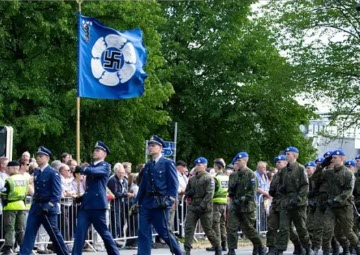
So what’s with the Swastika and why would NATO even consider accepting Finland given its current, official, endorsement of literal Nazi ideology?
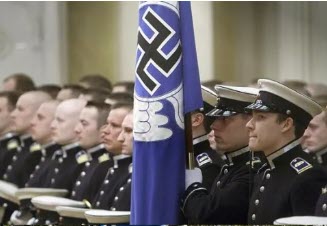
HAL TURNER EDITORIAL OPINION
I thought Nazis were the bad guys. I thought tens of millions of people DIED fighting the Nazis in World War 2.
Yet here we are, in the year 2022, and what do we see in Ukraine and now, in Finland? Nazis!
From at least 2014 through 2022, we watched the AZOV Regiment of the Ukraine Armed Forces, wearing Waffen SS lightning logos on their government issued uniforms, wearing helmets with Swastikas emblazoned on them, and doing so much harm and damage, that Russia realized the need to enter Ukraine to protect Russian-Speaking people in Luhansk and Donetsk, from these Nazi units in Ukraine.
Once Russia entered Ukraine, what did the west do? We sided with Ukraine. An odd thing to do given that government embraces Nazi ideology and symbolism in its army, in its police and in its government officials.
Then, Finland and Sweden got spooked by Russia entering Ukraine, and both Finland and Sweden want to join NATO.
Now, we see that in Finland too, their official military units openly march with Swastika flags!
Again, I thought Nazis were the bad guys. What am I missing here?
Was World War 2 not dispositive of Nazis? Was that war, which killed 90-100 Million people, merely a battle in some kind of never-ending war?
Because as I sit here on June 7, 2022, what I see is the rise of Nazi ideology, embraced by sitting governments, and marching under Nazi symbols in public. First in Ukraine, now in Finland.
If Nazis are the bad guys, why are we associating with them? Why would we even consider bringing Finland or Ukraine into NATO?
Quest for the Grave of Scotia, the Pharaoh’s Daughter Who Founded Scotland and Ireland
A short distance from the bustling Irish town of Tralee in County Kerry there is an otherworldly looking glen which is known as Scotia’s Grave. According to Irish folklore, the glen was the location of a battle known as Sliabh Mish which took place between the Celtic Milesians and a supernatural race called the Tuatha Dé Danann (tribe of the gods).
Although it was the Milesians who were victorious in battle it was a triumph at the expense of their queen, Scotia, who is reputed to have been buried in the glen.
Who Was Queen Scotia?
Queen Scotia appears in a chronical called the Book of Leinster , a medieval Irish manuscript which was compiled in around 1160 AD. The book was compiled by an abbot named Áed Ua Crimthainn who deeply respected the traditions and history of Ireland, even when they were at odds with his views as a Christian or his reasonable beliefs as a well-educated man.
She is described as the daughter of an Egyptian Pharaoh, the wife of a Greek king, and a contemporary of the Biblical Moses who allegedly cured her husband after he was bitten by a venomous snake.
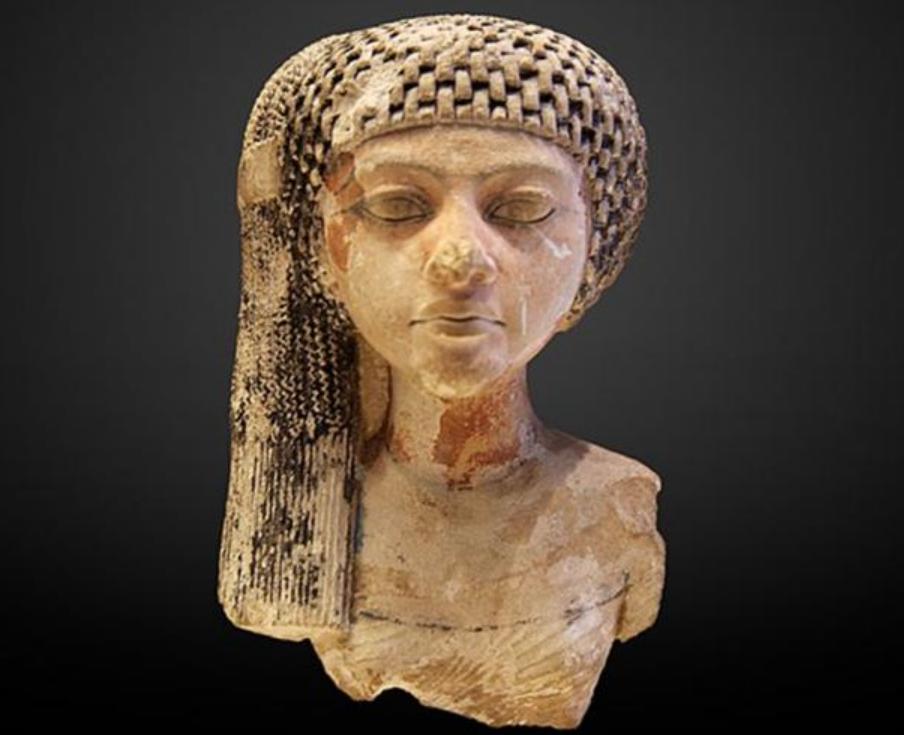
Queen Scotia was the daughter of an Egyptian Pharaoh. (Rama / CC BY-SA 3.0 )
Both Scotia and her husband King Gaythelos were exiled from Egypt for unspecified reasons during a time of great upheaval, and it is after this that they traveled to Europe where they founded both the Scots in modern day Scotland and the Gaels in Ireland. Scotia gave her name to the Scots and to Scotland and Gaythelos gave his name to the Gaels.
Scotia’s death in battle was supposedly the result of the pregnant woman attempting to jump a bank on horseback.
A Traditional Interpretation of the Myth of Scotia
The myth of Queen Scotia has traditionally been regarded by historians as entirely fictitious. It was recorded by an abbot at a time where people in Christian countries wanted to assert their ancient roots, and links to important Biblical figures. It is particularly noteworthy that Scotia’s husband was said to have been healed by Moses.
The site of Scotia’s Grave itself could be a way for a place so remote from the original locations in the Bible to steak a believable claim to having Biblical links. ‘Burial place of the wife of a man who once met Moses’ is vague enough to be believable and unremarkable enough that it does not warrant extensive investigation to verify it, while still referencing one of the more important figures in the Old Testament .
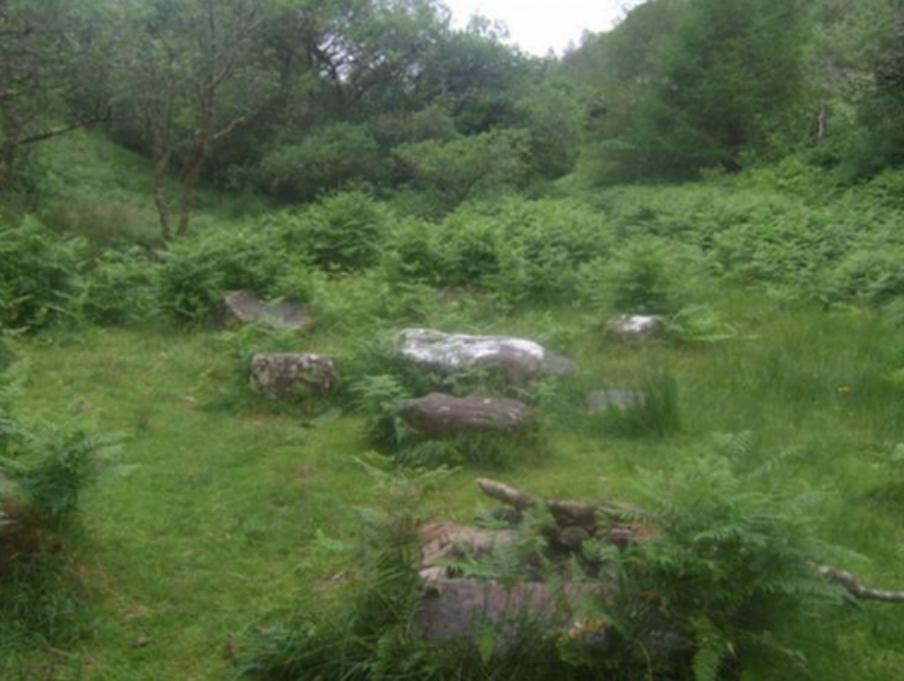
The glen where Queen Scotia’s grave is said to be. (John M / CC BY-SA 2.0 )
Although the myth of Queen Scotia (also Scota) is fantastical it is not out of the realms of possibility and controversial historian Ralph Ellis believes he has found evidence that Scotia really did exist.
The History of Egypt
Ellis claims the myth of Scotia does not originate in the Book of Leinster but far earlier, in a text called The History of Egypt ( Aegyptiaca) written in 300 BC by a Greco-Egyptian author called Manetho. Evidence in Aegyptiaca may point to Scotia being an identity of Ankhesenamun, a daughter of Akhenaton and Nefertiti, and both half-sister and widow of Tutankhamen
According to Ellis, Ankhesenamun went on to marry a Pharaoh named Ay, whom he claims is actually Gaythelos. After Ay’s reign was cut short, the couple were sent in to exile where they made their way to Europe and settled in Iberia. Rather than Scotia herself making the journey to Ireland, Ellis believes it was her descendants who migrated, four generations after she settled in Iberia. Of course, this interpretation does not explain the existence of Scotia’s Grave or the references to Queen Scotia in Medieval Irish literature .
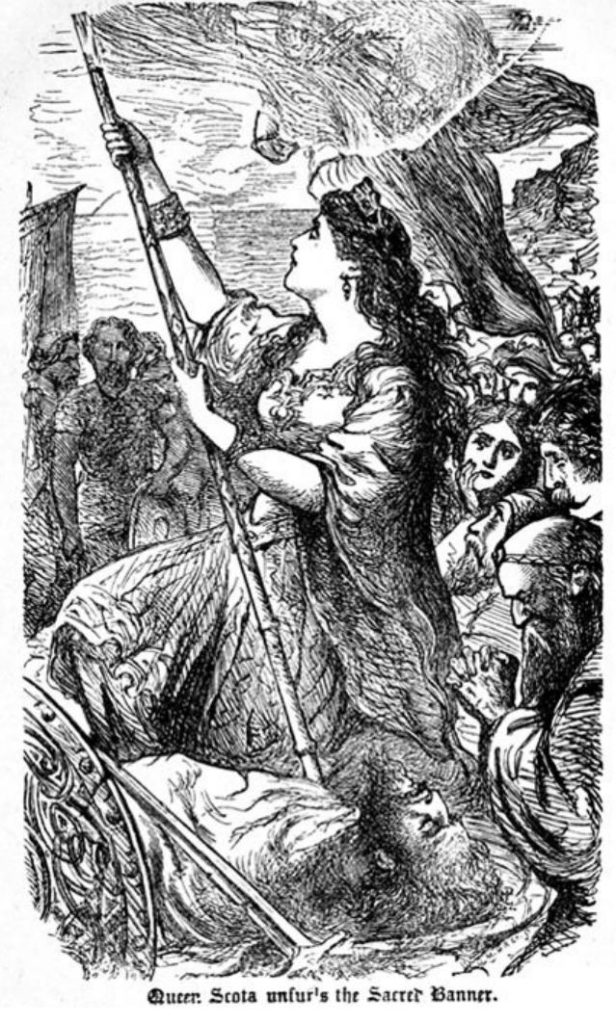
“Queen Scotia unfurls the sacred banner”, illustration from an 1867 book of Irish history. (Nicknack009 / Public Domain )
Archaeological Evidence?
Although Ellis’ bold claims are extremely controversial, he is not the only one to find evidence the myth may be at least partially true. Lorraine Evans, who studied Egyptology at one of the world’s top universities, also believes the myth of Queen Scotia cannot be entirely debunked.
She points to the remains of an ancient boat found in Yorkshire, which is of a type found in the Mediterranean at around the time the myth is set, as just one piece of archaeological evidence proving a link between Egypt and ancient Britain and Ireland.

Signpost of Scotia’s grave by-road, south of Tralee. (Fenitharbour / Public Domain )
It is often the case that myths and legends have a kernel of truth at their core and there is no reason the story of Scotia should be any different. The legend may have grown up around the desire to find links to Biblical figures but if you strip back the layers it becomes more plausible. Maybe Scotia didn’t ever meet Moses and maybe she was not an exiled Egyptian queen. Perhaps, if she was real, she was just an extraordinary woman who made an exceptional journey across continents almost 4000 years ago.
Slow-Cooker Tangy Italian Beef Sandwiches
Take just 10 minutes to prep this recipe. You’ll not only get great sandwiches but if you’re lucky, you’ll have leftovers, too.
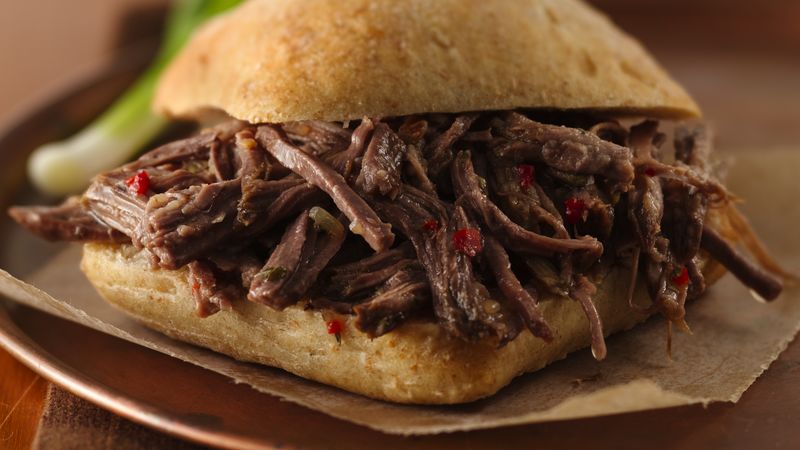
Ingredients
- 1 boneless beef sirloin tip roast (3 to 4 lb), trimmed of fat
- 1/4 cup packed brown sugar
- 1 bottle (16 oz) Italian dressing
- 2 teaspoons Italian seasoning
- 12 burger buns, split

Kitty Cat video of the day
A couple abandons a cat as they move away. And a neighbor rescues the cat. A great video.
Disturbing Red Painted Curse Discovered In Jerusalem Catacomb
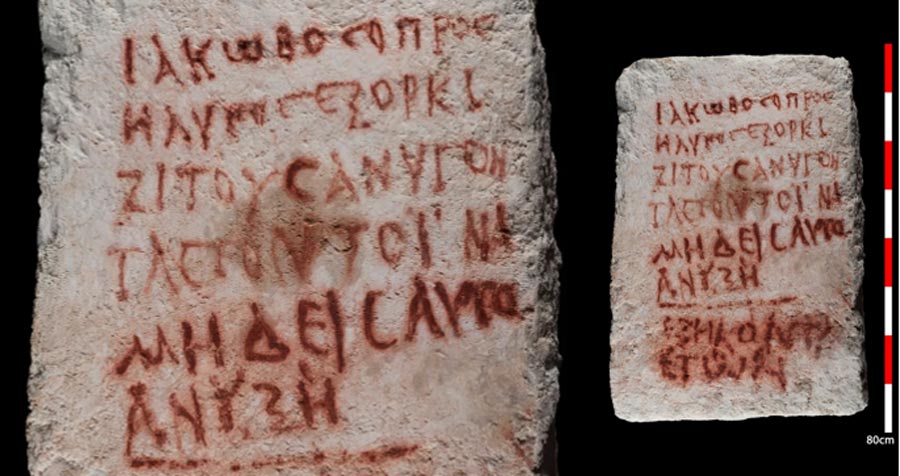
An ancient painted curse has been discovered in a tomb in Beit She’arim. Representing the first such discovery in 65 years, the timeworn Greek text warns thieves that Yaakov (Jacob) “the Proselyte” will curse them.
Yaakov lived about 1,800 years ago. His title, “the Proselyte,” means he converted to Judaism. After having died at around 60 years of age Jacob was interred in a cave at Beit She’arim, the ancient Jewish town and necropolis in Lower Galilee during the Roman period. The park-like area around the necropolis is about 100 kilometers or 62 miles northwest of Tel Aviv and has been a UNESCO World Heritage Site since 2015.
After Jerusalem’s destruction in 70 AD the Sanhedrin Jewish council moved to Beit She’arim, and it became the new Jewish center of education and learning. Archaeologists from the Israel Antiquities Authority ( IAA) and University of Haifa revealed on Wednesday that the curse was found painted in a catacomb in the Beit She’arim necropolis that was only discovered last year.
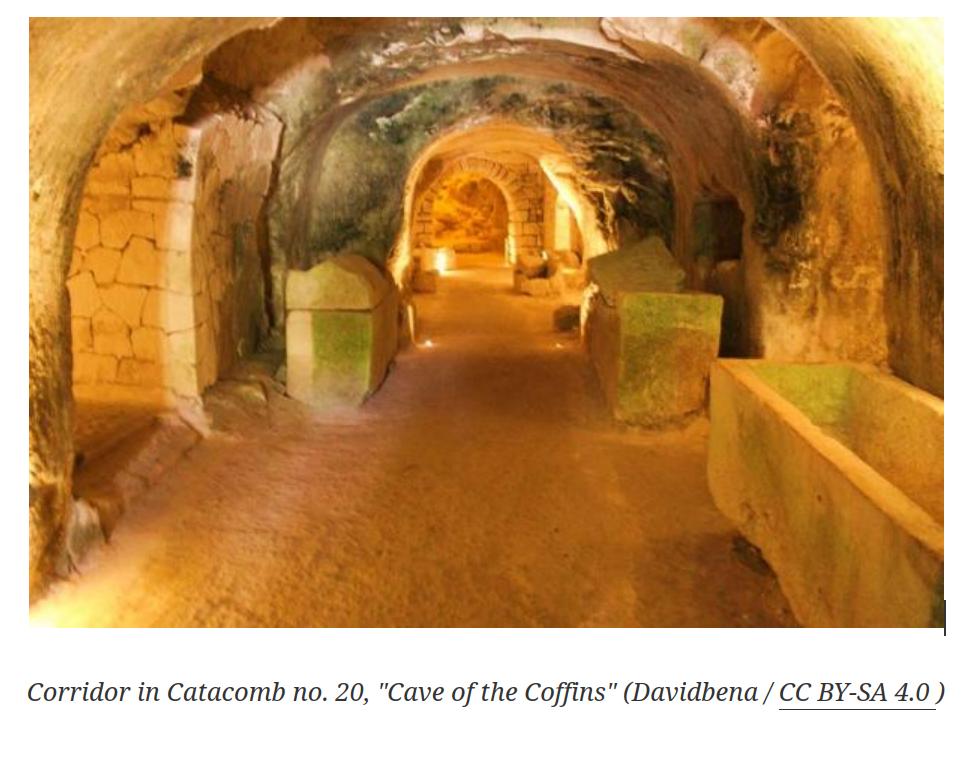
The Red Painted Curse or Hex Was Written in Greek
According to a report in Haaretz, it was Jonathan Price, professor of ancient history at Tel Aviv University, who discovered the two Greek inscriptions inside the innermost chamber of an unexplored tomb. The painted curse, or hex, was written in Greek, in red paint, on a wall near the burial lodge. It was specifically designed to deter grave robbers , and as such it says: “Jacob the Proselyte vows to curse anybody who would open this grave, so nobody will open it. He was 60.”

The curse, written in red paint on stone at an ancient grave in Beit She’arim. It reads “Jacob the Proselyte vows to curse anybody who would open this grave, so nobody will open it. He was 60.” As translated by Jonathan Price, professor of ancient history at Tel Aviv University. (יבגני אוסטרובסקי/ IAA)
The researchers suspect his age, 60, was written by someone after Jacob had died. Prof. Adi Erlich of the Zinman Institute of Archeology at the University of Haifa, who leads the excavations at Beit She’arim, said the inscription dates to the Late Roman or Early Byzantine period (i.e. circa 390-400 AD). Prof. Erlich also explains that Jacob, or Yaakov the Proselyte, was probably a Christian, or had belonged to one of the popular cults of Isis or Mithra.
The “Life-changing” Conversion of Jacob To Judaism
What exactly did Jacob have to do to convert to Judaism? Firstly, according to an article in the BBC, converting to Judaism “is not easy” and involves many serious lifestyle changes. After about a year of studying Jewish law converts not only have to wholeheartedly accept the Jewish faith, but they become a member of the Jewish People, and they must embrace the totality of Jewish history , and the culture that grows from it.
Even when a prospective candidate’s heart is in the right place, the process of conversion to Judaism is governed by Jewish religious law in a religious court. And while many changes must be made in diet and lifestyle, perhaps the hardest is that male converts must undergo circumcision. And even if a man is already circumcised, this is all about ritual, and blood must again be drawn, as the whole ordeal is symbolic of the covenant between God and Abraham described in the Old Testament.
From Ancient to Contemporary Grave Robbers in Israel
Jacob’s curse was aimed directly at tomb robbers over 1,500 years ago, but looting is still a problem in Israel today. In 2012, the Times of Israel reported on a small squad from the Israel Antiquities Authority “who rappelled to the bottom of an ancient well, crawled through a narrow entrance into a 2,000-year-old horizontal tunnel and surprised two Palestinian men scouring the passageway for artifacts.”
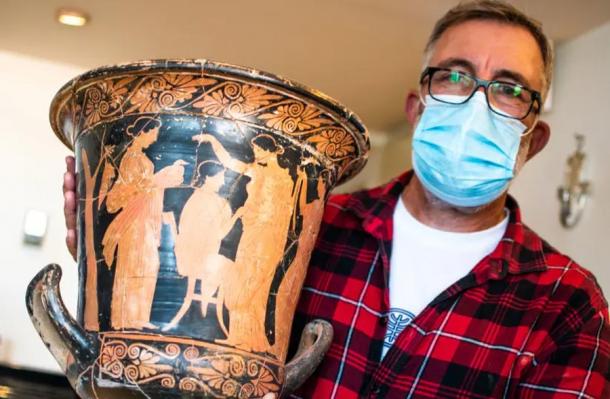
A stolen and recovered Greek vase painted in the red-figure style, looted from Israel, with Head of the Anti-Theft Unit at the IAA Amir Ganor. (Yuli Schwartz / IAA)
Only last year Amir Ganor, Head of the Anti-Theft Unit at the IAA, told the Jerusalem Post about “one of the most significant operations undertaken in the history of the country to fight the unlawful trade in artifacts .” A criminal ring had stolen ceramic pottery, coins, jewels and protomas (representation of the head and neck of an animal) of Roman deities “valued at roughly tens of millions of shekels.” Ganor said many of the objects were “left in tombs as offerings to the dead and were meant to serve the departed in the life beyond.”
It seems that as the age of science progresses, curse effectiveness diminishes and grave robbing increases.
Do you want more?
You can find more articles related to this in my latest index; A New Beginning. And in it are elements of the old, some elements regarding the transition, and some elements that look towards the future.
New Beginnings 5.
Articles & Links
Master Index.
- You can start reading the articles by going HERE.
- You can visit the Index Page HERE to explore by article subject.
- You can also ask the author some questions. You can go HERE to find out how to go about this.
- You can find out more about the author HERE.
- If you have concerns or complaints, you can go HERE.
- If you want to make a donation, you can go HERE.
.



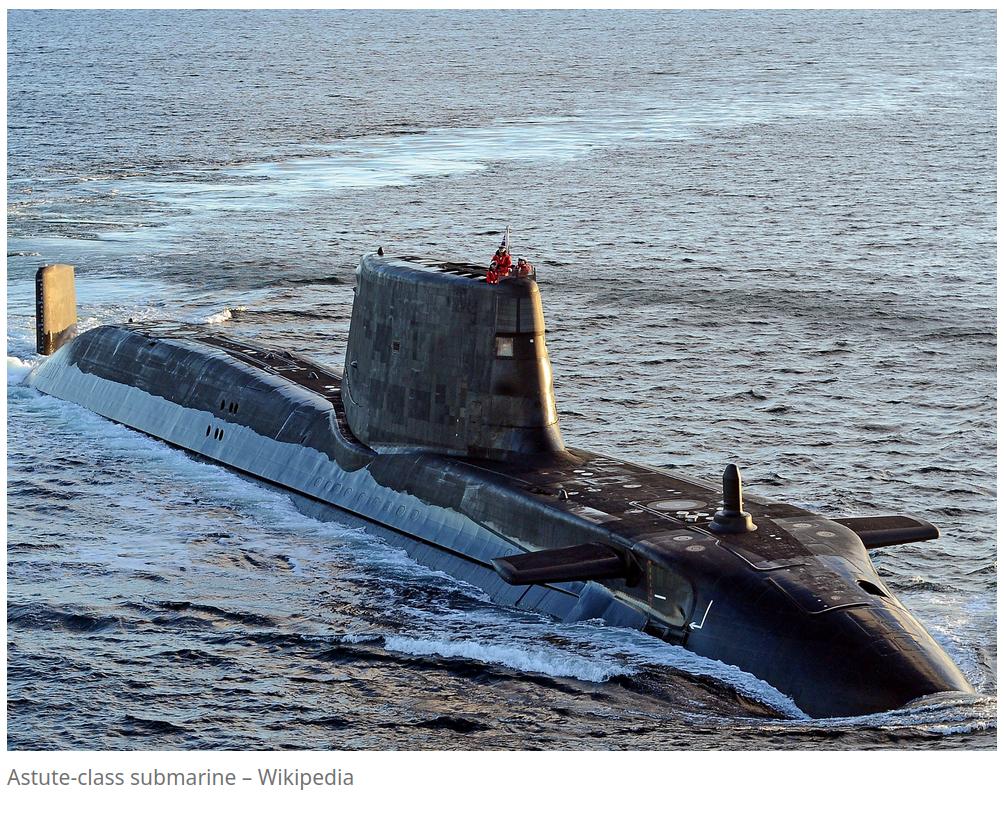

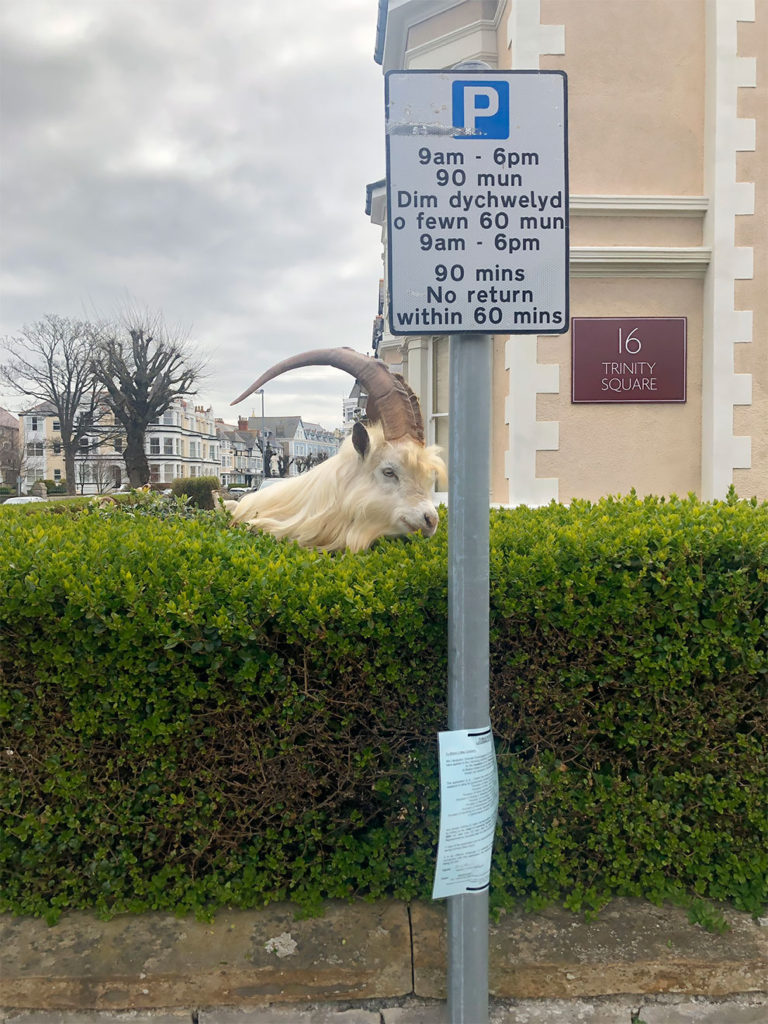

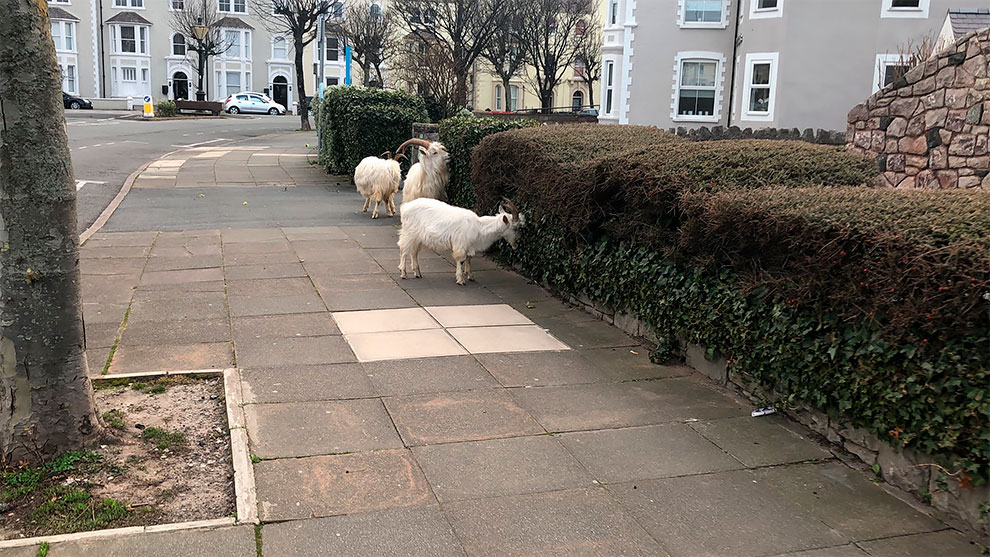
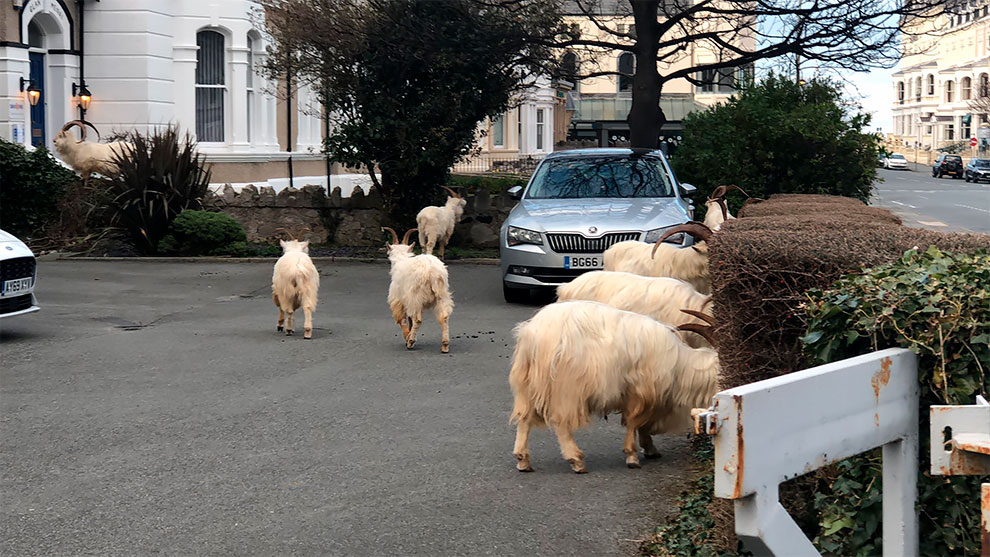


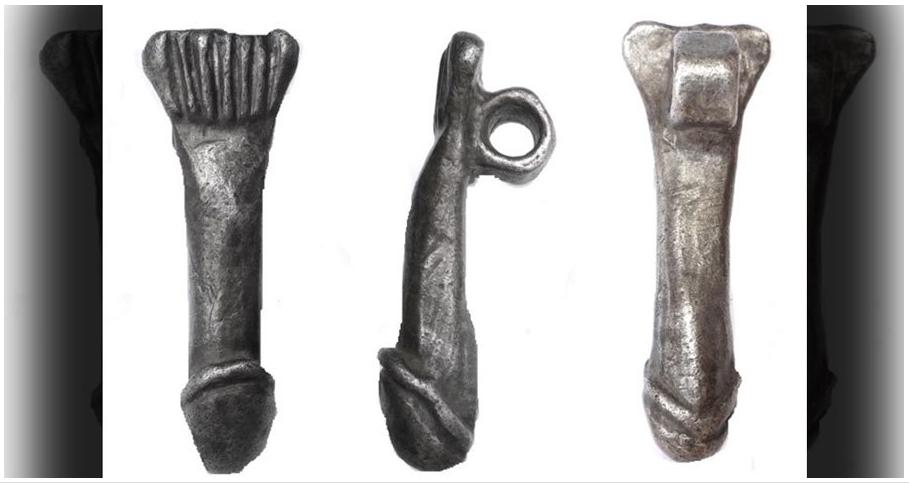

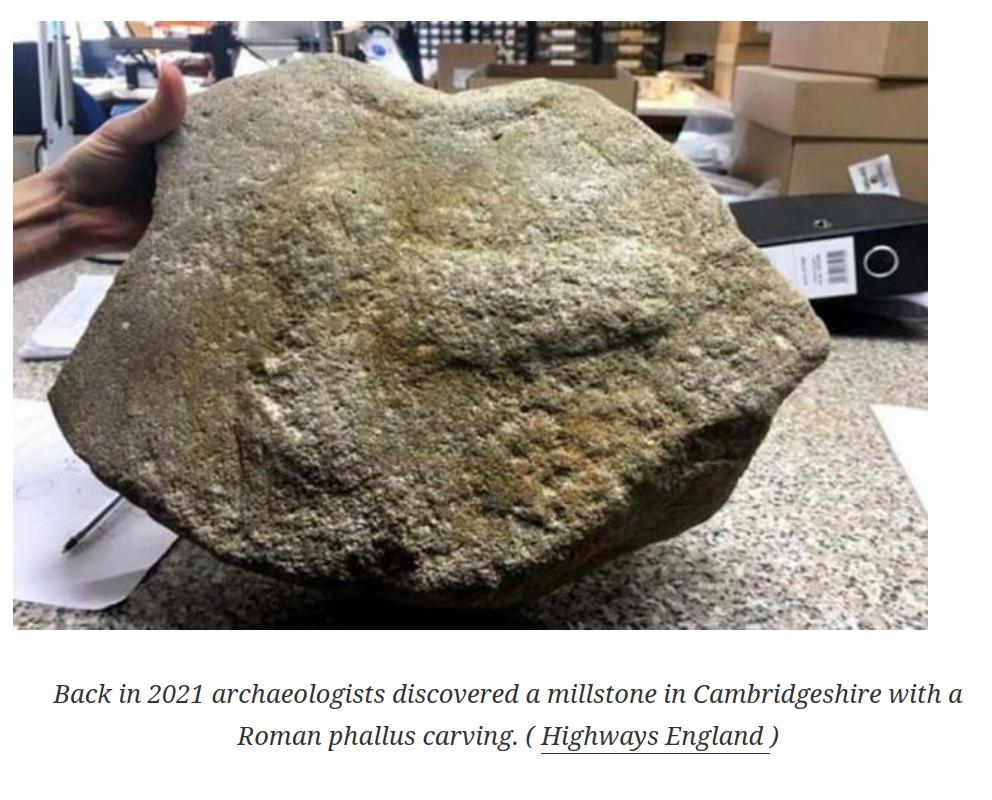
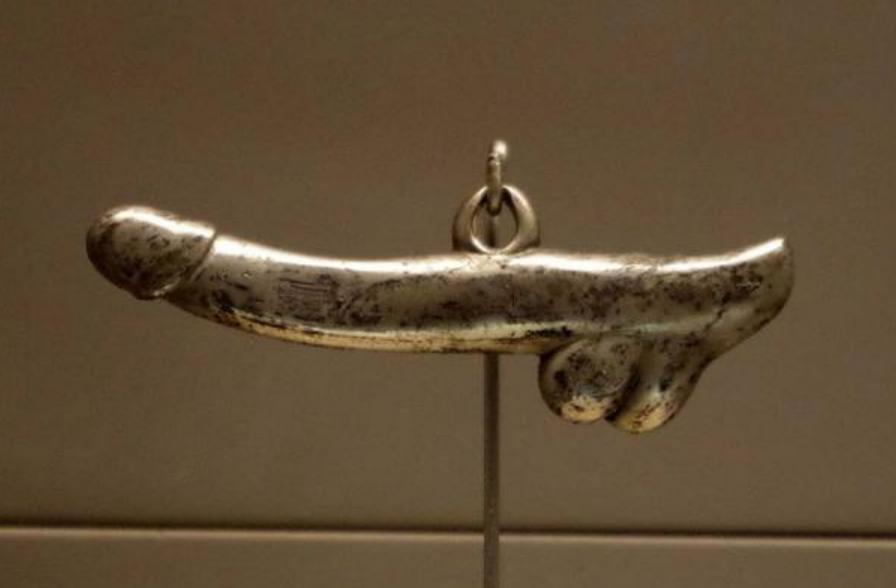





Teletubbies save Washington State from killer hornets with futuristic hornet vacuum.